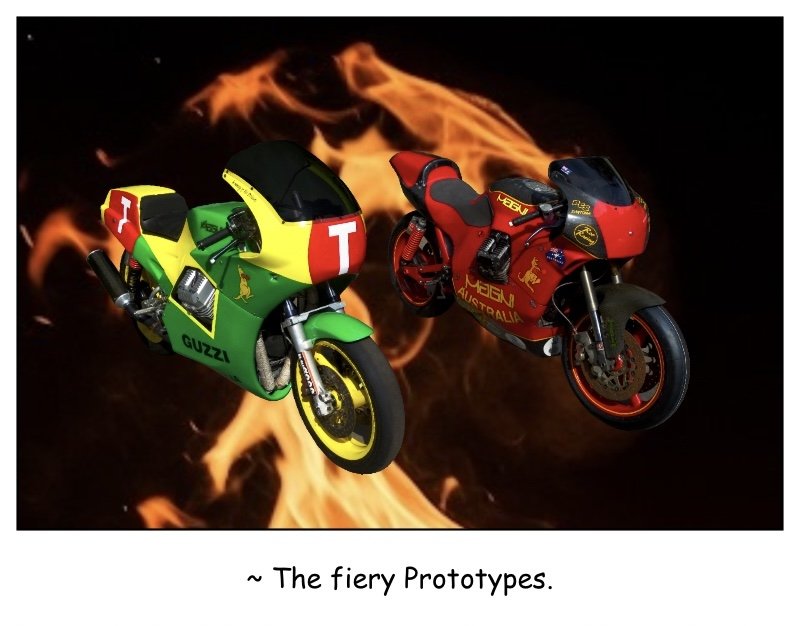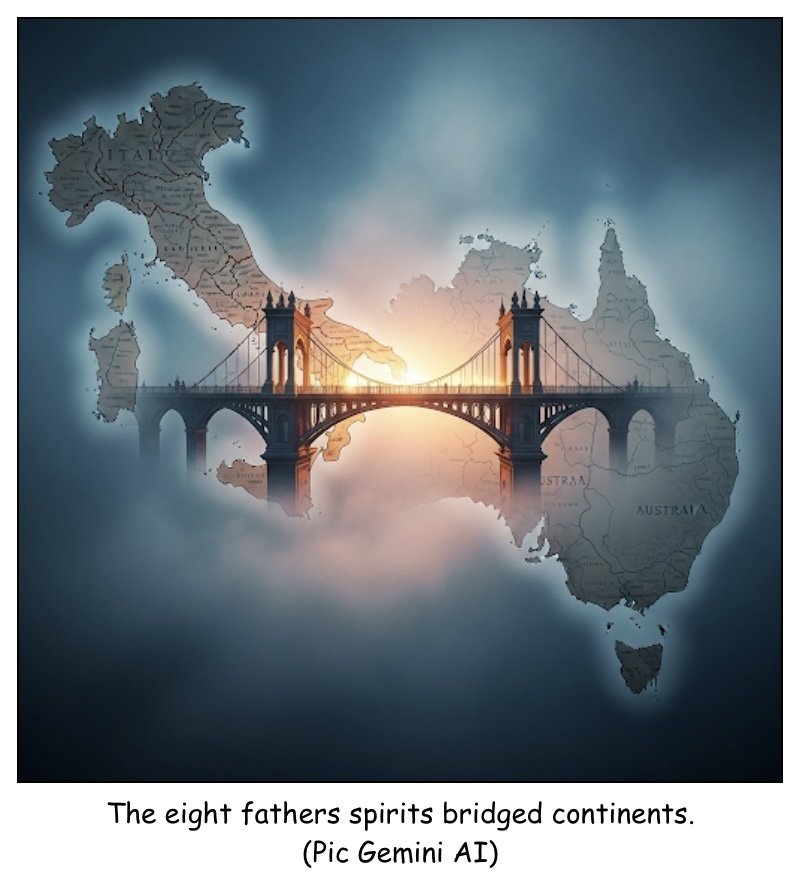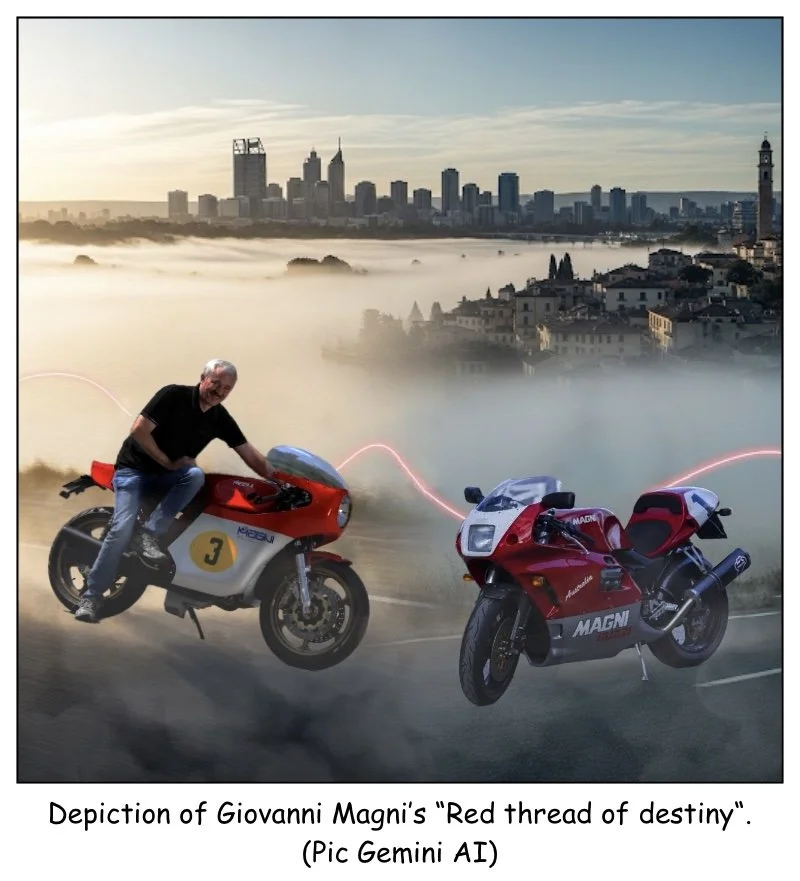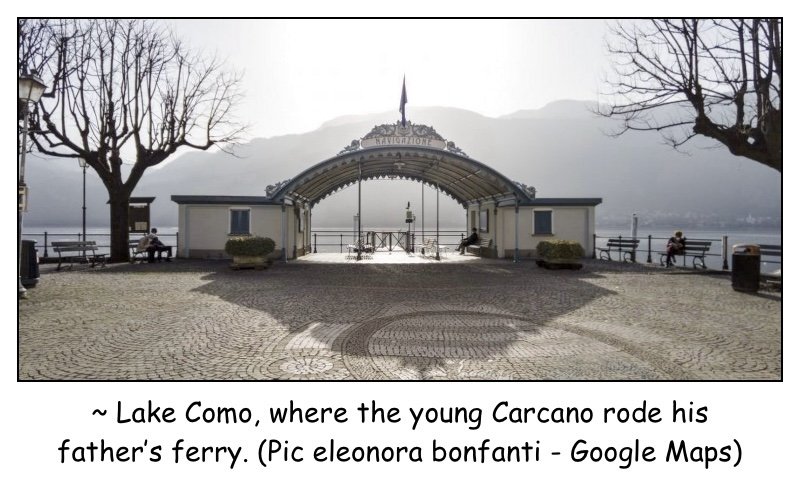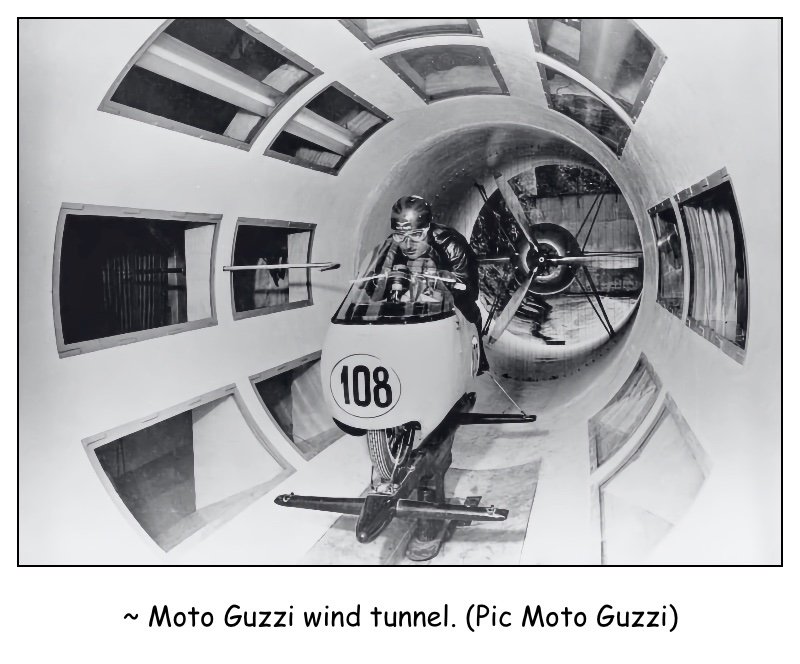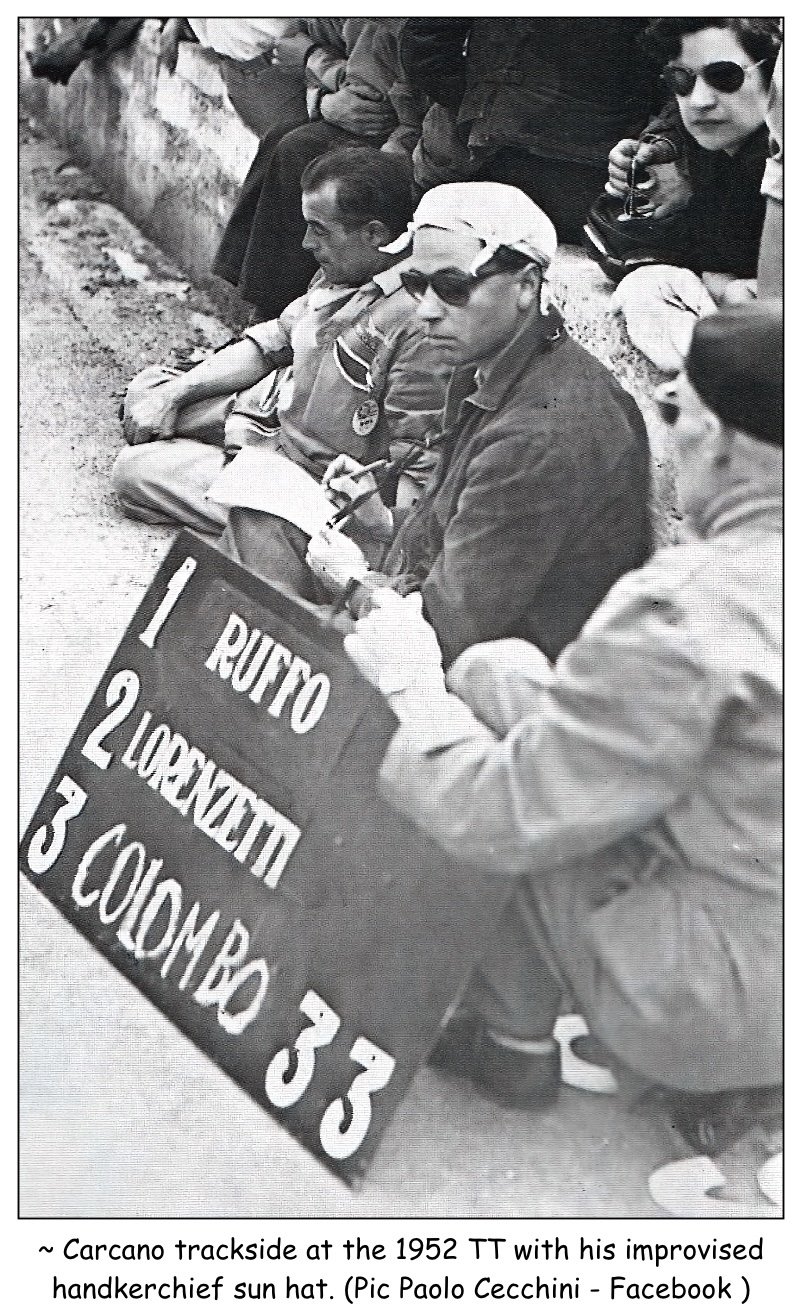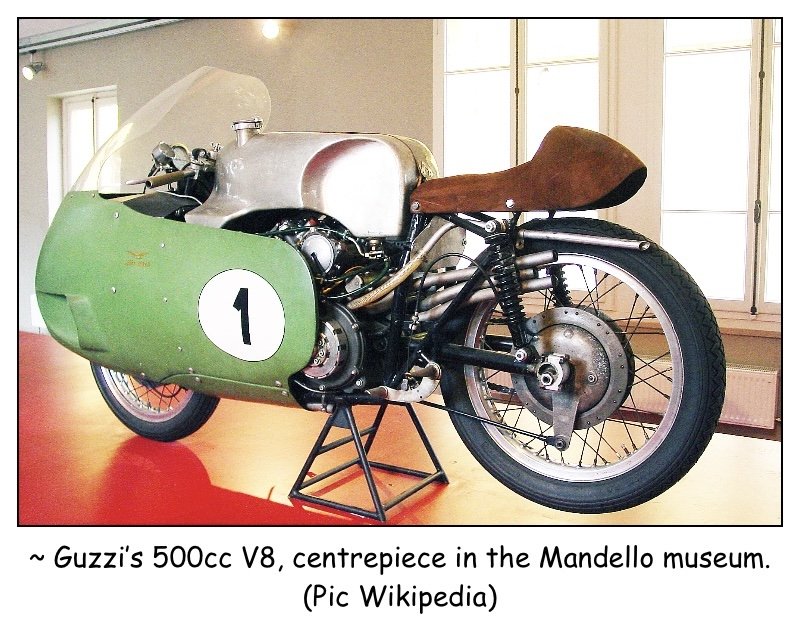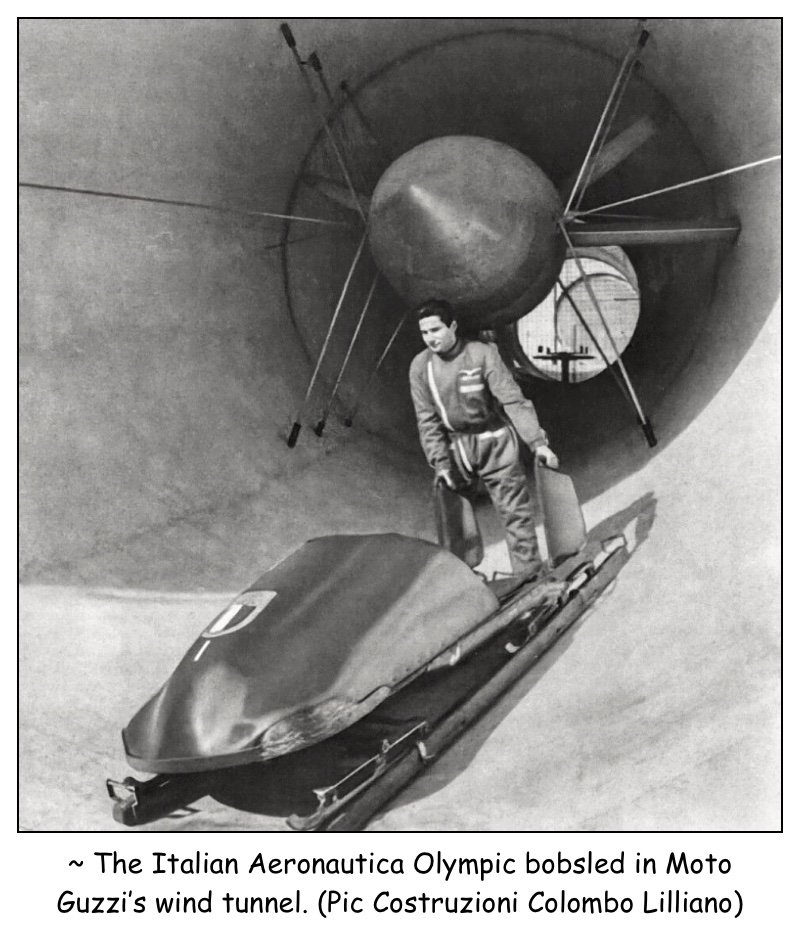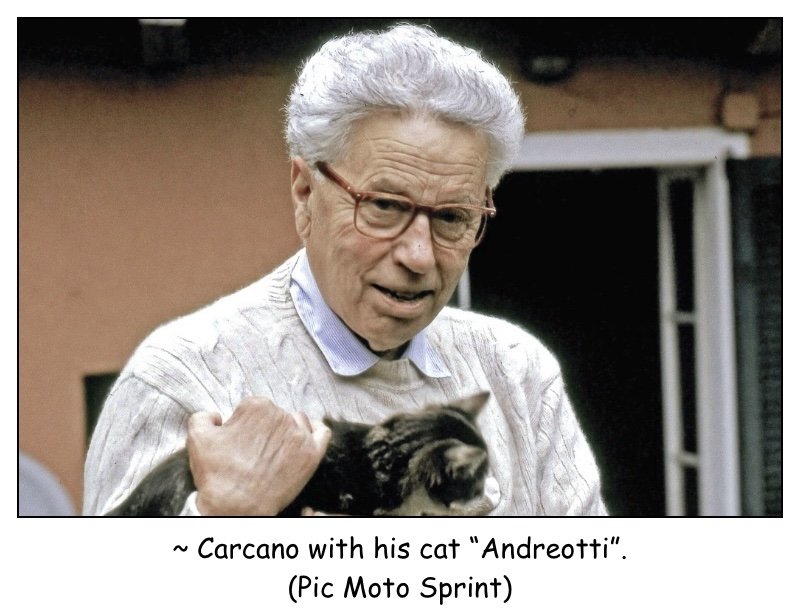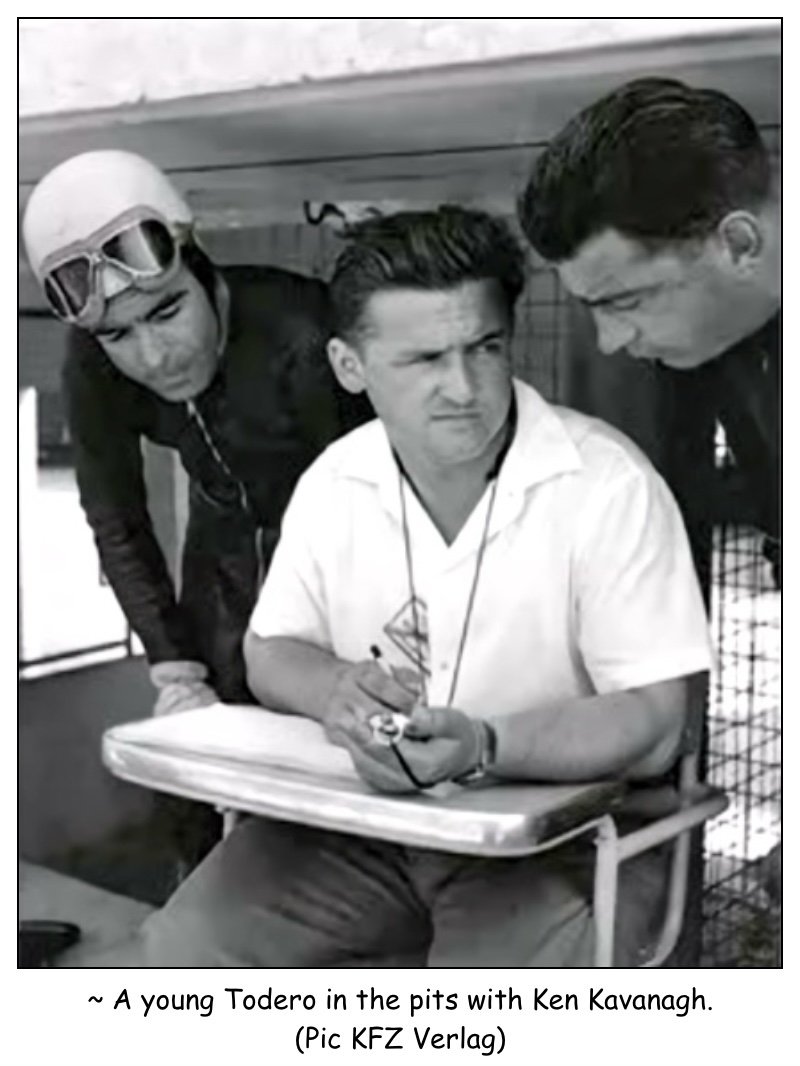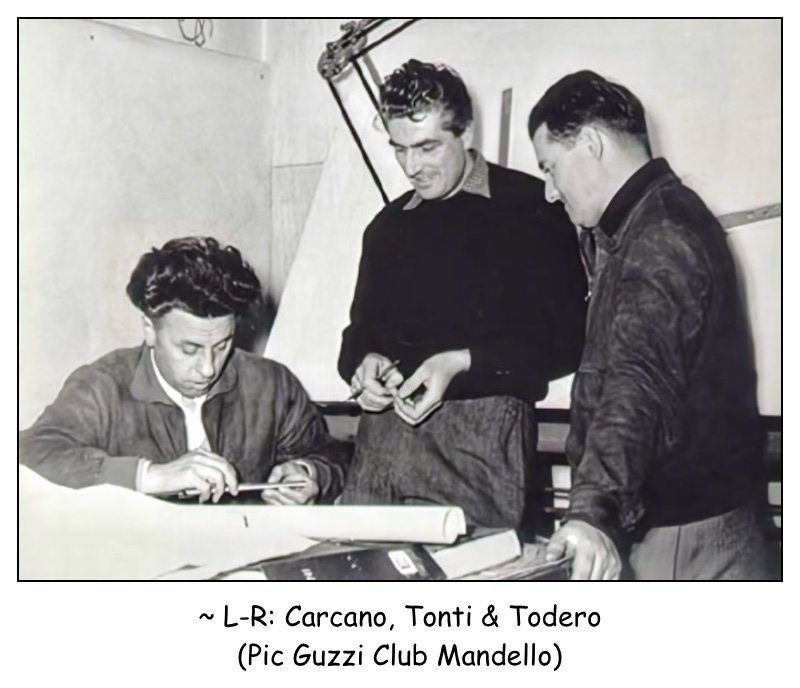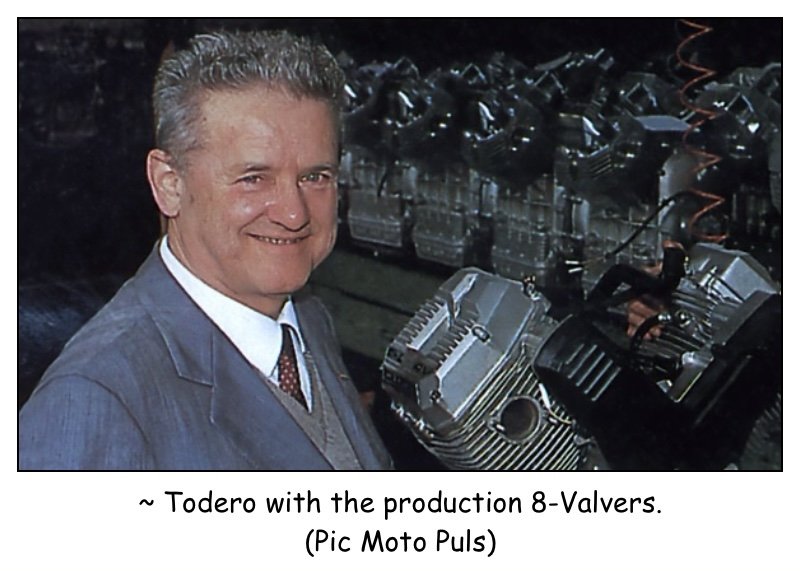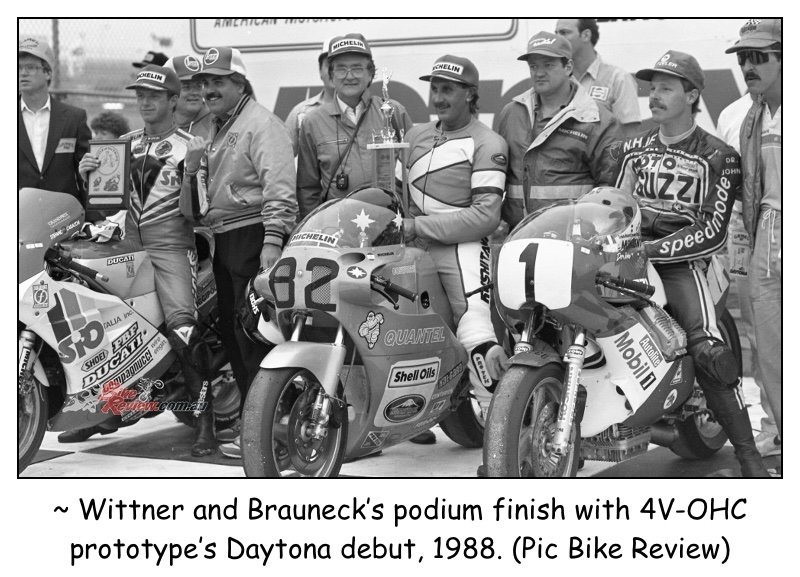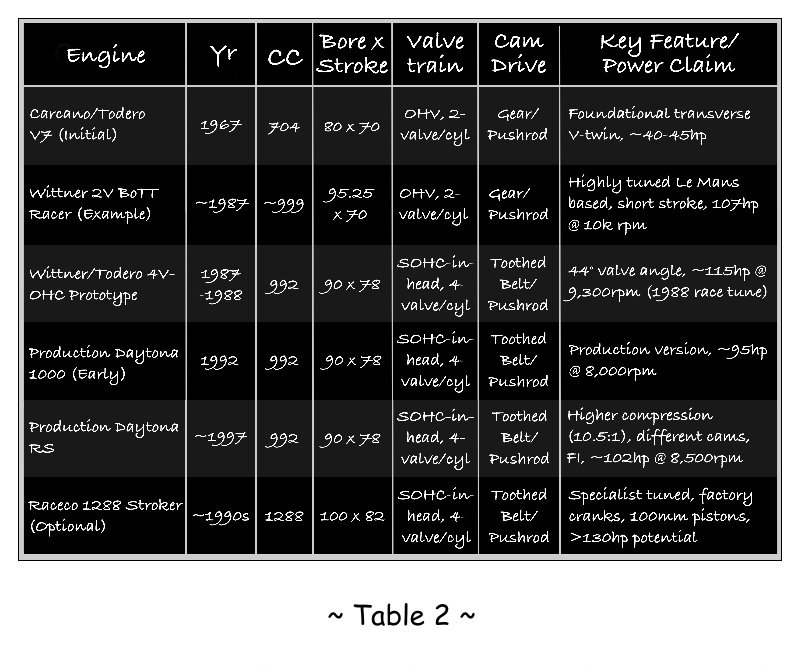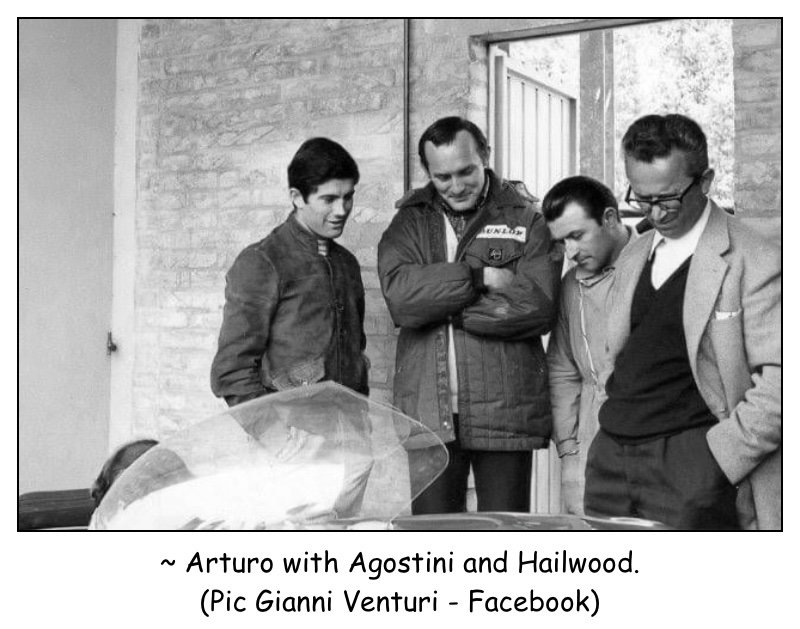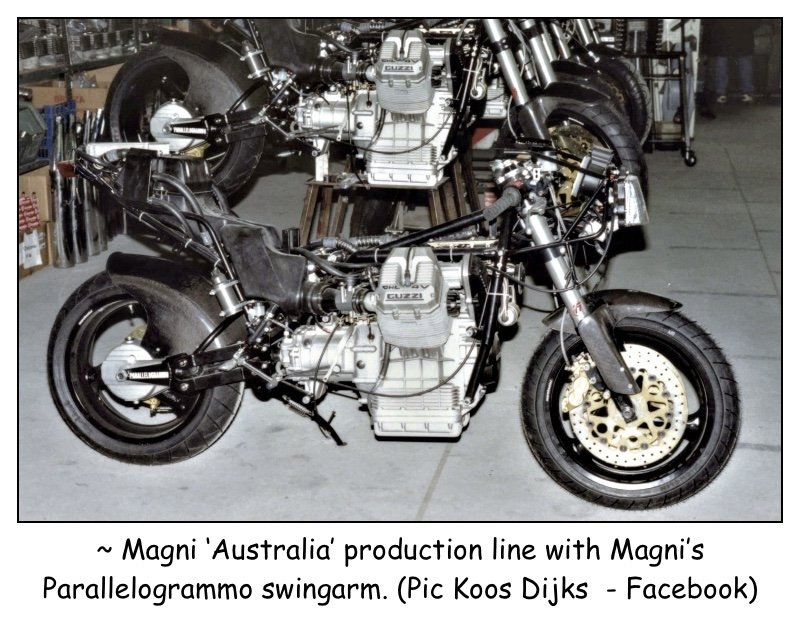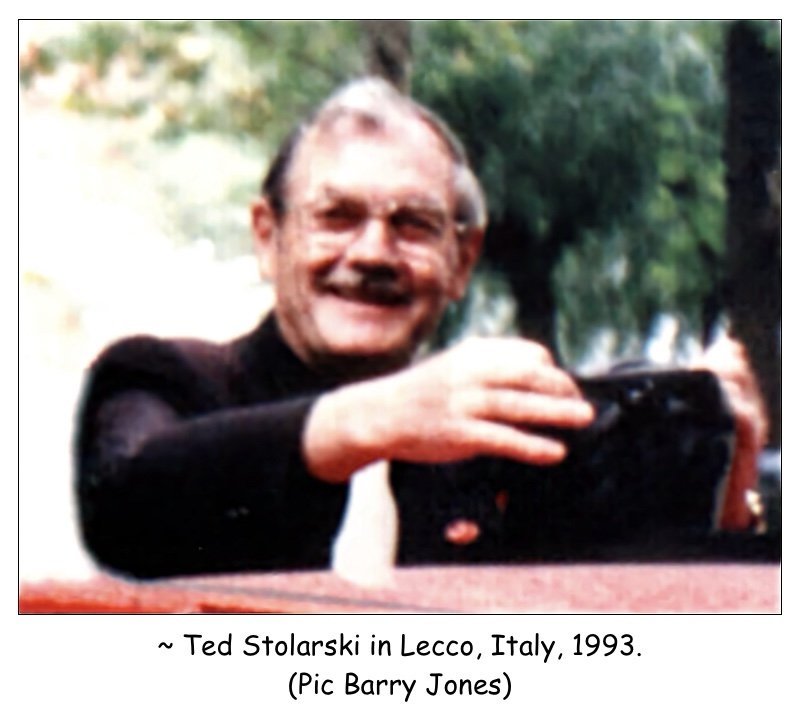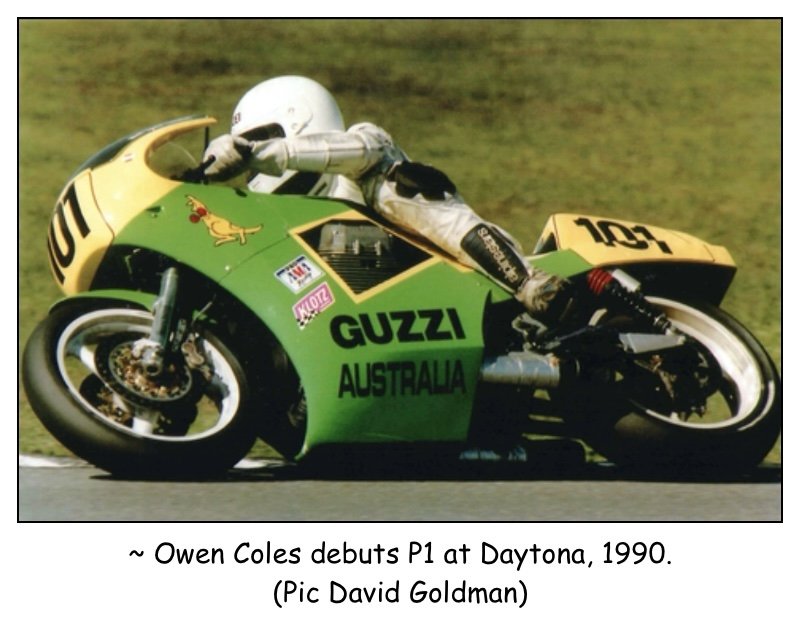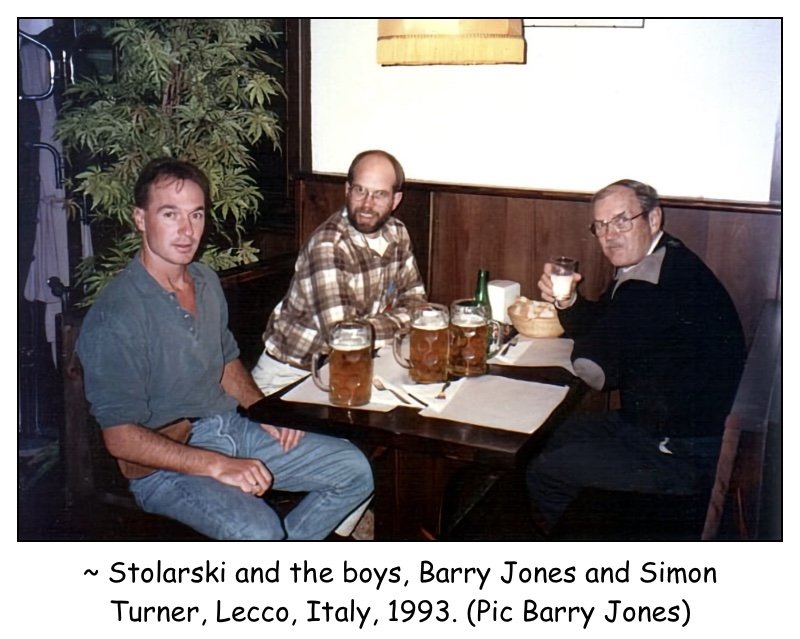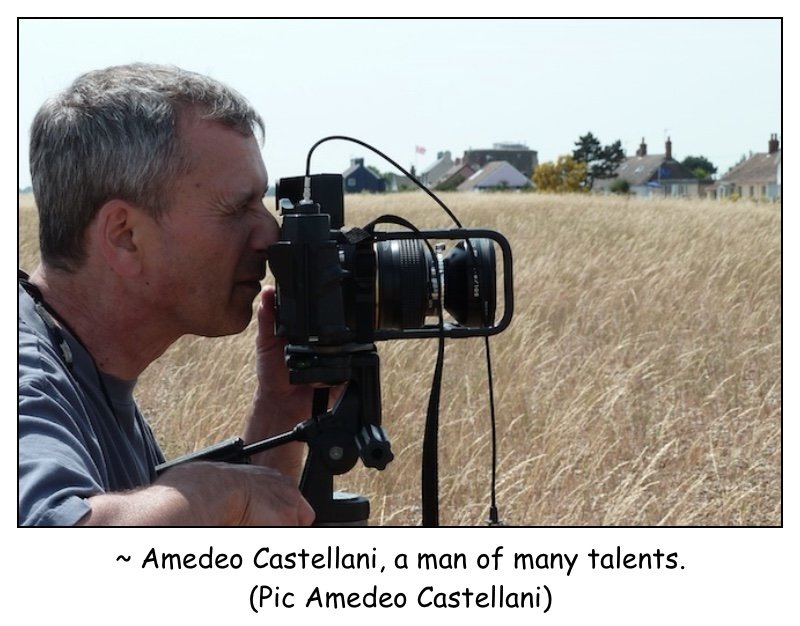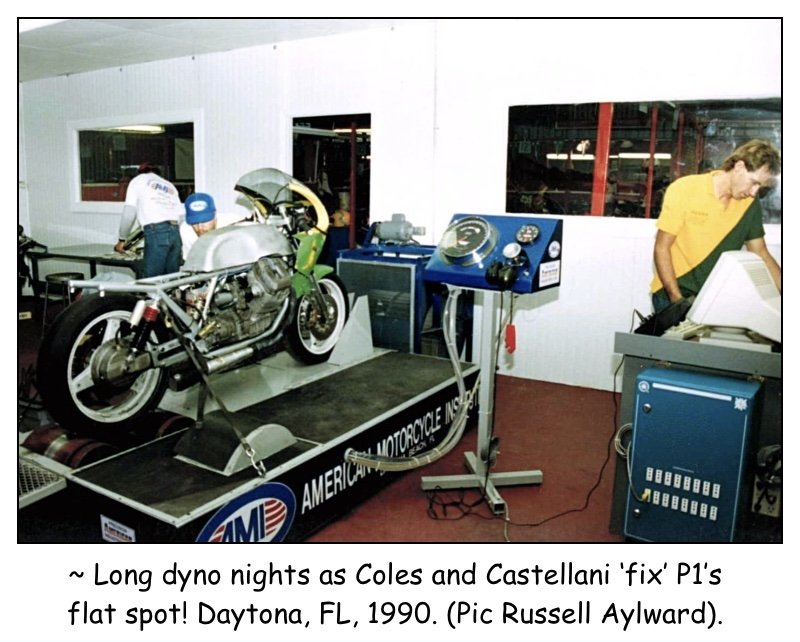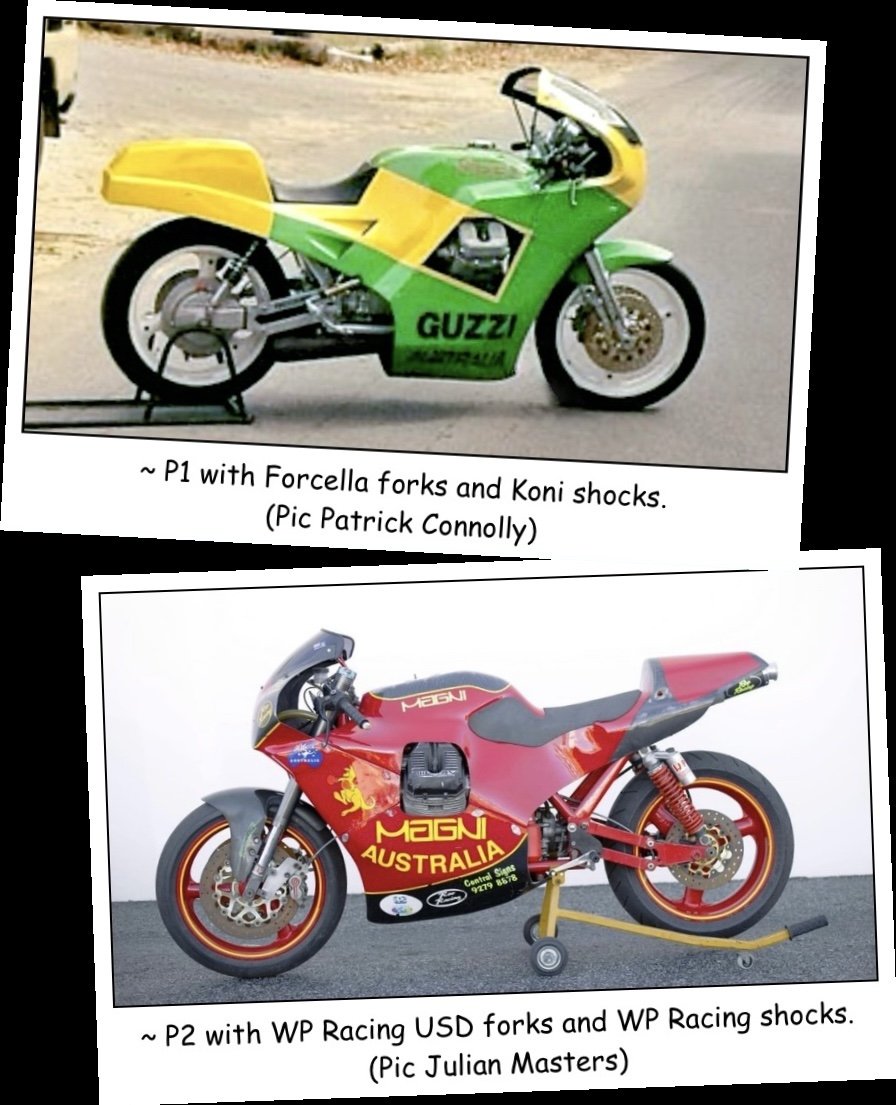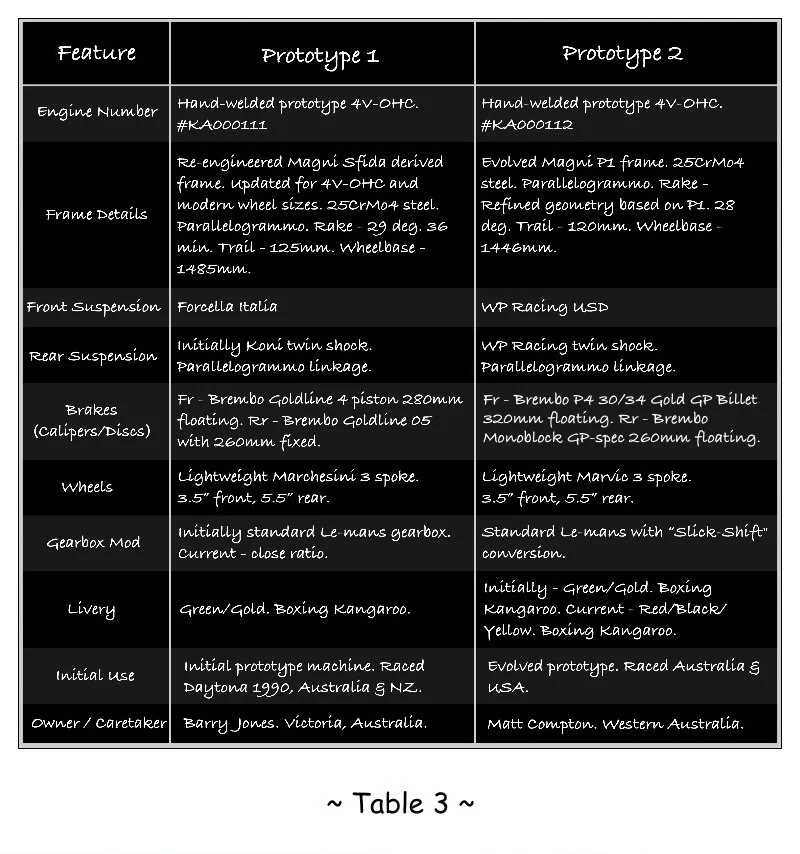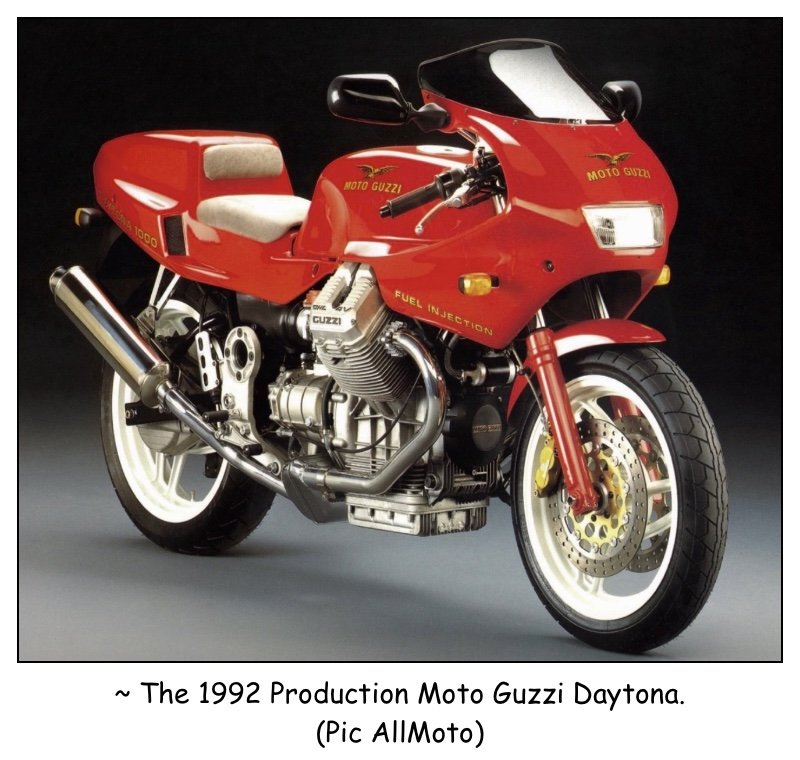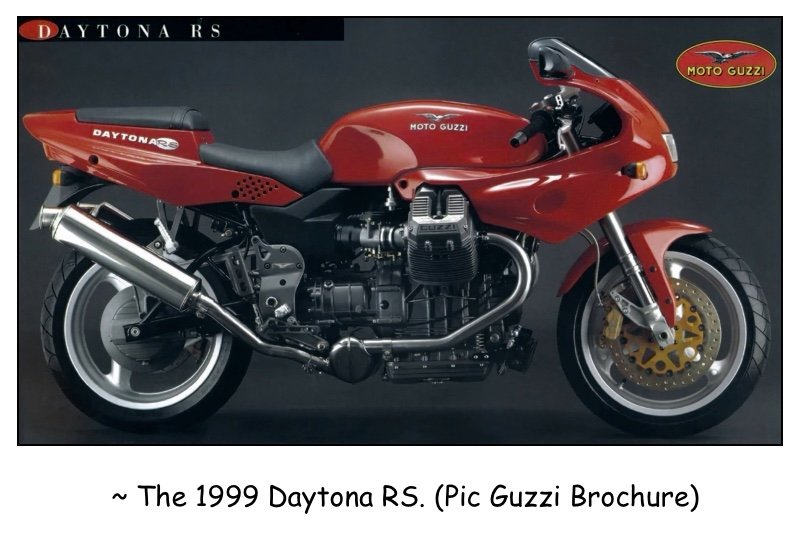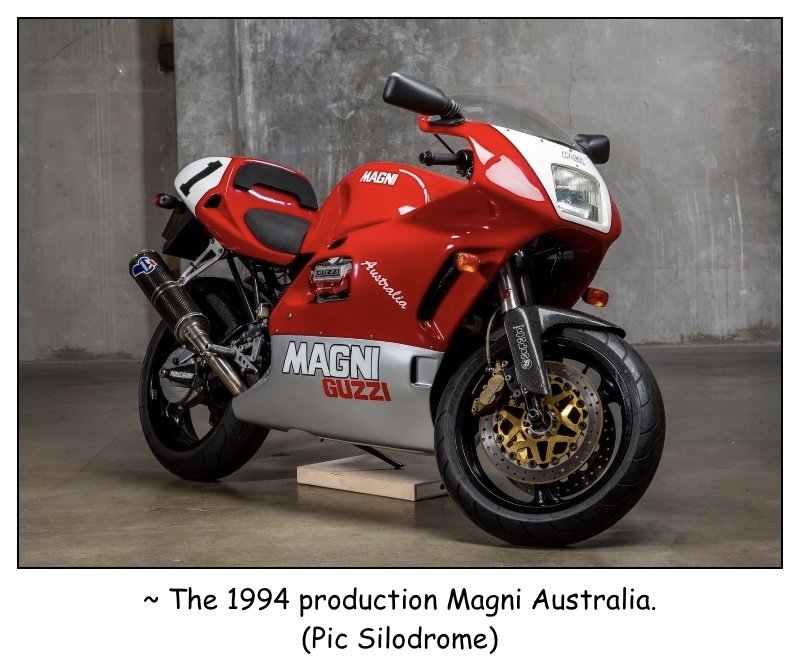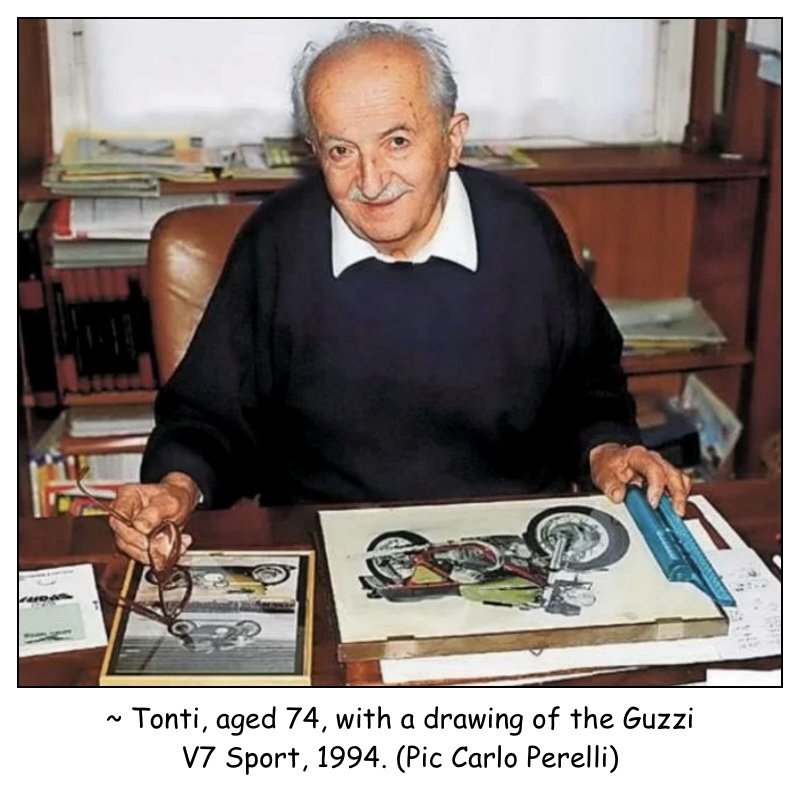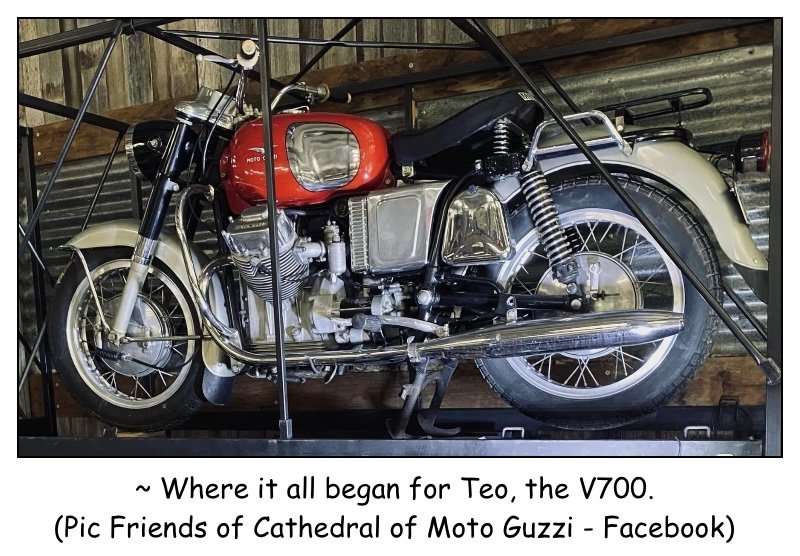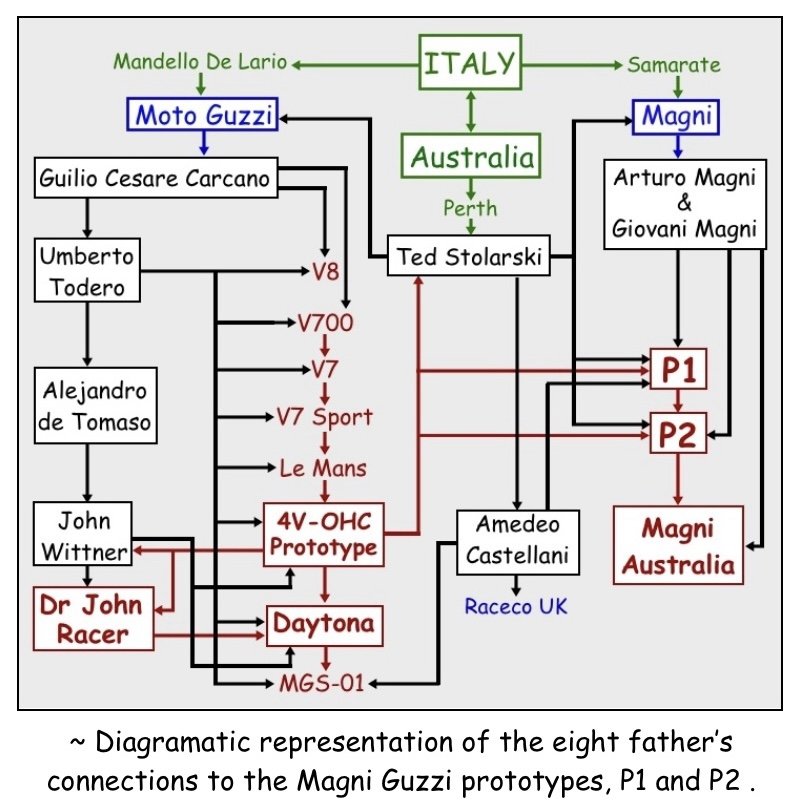The Eight Fathers
The Eight Fathers
Written and Narrated by Matt Compton
2nd July 2025
1. The Fire of the Prototypes
In the pulsing heart of motorcycling’s soul, prototypes are far more than machines, they are the dreams of men whose lives beat with the rhythm of the open road, forged in the crucible of passion, kinship, and an unyielding desire to transcend the ordinary. They are not built for showrooms or daily commutes but crafted to push the boundaries of performance, test radical ideas, and embody an uncompromised vision, often diluted in mass production. Prototypes are rolling laboratories, physical manifestations of ambition, engineering audacity, and the tantalising question of “what if?” This question stirs the hearts of collectors, historians, and riders alike.
The Magni Guzzi prototypes, affectionately nicknamed P1 and P2, are such dreams. Born in the late 1980s from a constellation of remarkable individuals, the alchemic union of eight fathers whose spirits reached across continents, from the hallowed halls of Moto Guzzi in Mandello del Lario to the sun-drenched workshops of Perth, Western Australia. These motorcycles, powered by the thunderous 992cc 4V-OHC V-twin, are not just rare artefacts, they are the heartbeat of a brotherhood. To understand the genesis and significance of these two prototypes is to trace a narrative entwined through the lives and contributions of these key figures whose paths converged in the creation of these extraordinary machines:
1. Giulio Cesare Carcano
2. Umberto Todero
3. Alejandro de Tomaso
4. Dr. John Wittner
5. Ted Stolarski
6. Arturo Magni
7. Giovanni Magni
8. Amedeo Castellani
P1 and P2 are the realisation of the dedicated commitment, skill and sheer doggedness of these men, men who are fathers in the truest sense, who poured their lives into their pursuits, each other, and the next generation, crafting a legacy that transcends spec sheets and touches the depths of the human spirit. These masterpieces are a testament to the lives and passions of these creators, men of honour who built relationships as enduring as the machines they crafted, men who saw each other, not just colleagues, but as brothers in a shared quest for freedom and identity. These prototypes link Moto Guzzi’s storied past from the audacious V8 Otto Cilindri, to the iconic V7, to its modern rebirth in the Daytona and Magni Australia, pivotal artefacts that connected a golden era of racing to a new dawn of performance.
Their story is one of relationships, of honour given and received, of a community woven by the “filo rosso”, the red thread of destiny Giovanni Magni describes, “From the moment you are born, there is already a red thread of destiny running through your life, connecting you to certain people, places, and things. It is up to you only to discover it” [1]. As Carcano’s vision, even now, calls, “Non limitarti a guardare. Vieni, sperimenta e conosci. Sì è buono!” “Don't just look. Come, experience, and know. Yes, it's good!” a call that echoes throughout every Guzzista’s soul, stirring the heart with the promise of adventure and belonging.
These motorcycles, while sharing fundamental DNA, possess distinct identities forged through development and competition, each stand as singular treasures from a pivotal era. Their significance extends far beyond their rarity. P1 and P2 were critical technological and conceptual bridges, connecting Moto Guzzi’s post war racing zenith, the foundational V-twin that defined its modern identity, the performance revival of the late 1980s, and the unparalleled artistry of the Magni name.
The potent four-valve overhead camshaft (4V-OHC) V-twin engine, tested in these prototypes alongside Dr. John Wittner’s contemporary racer, became the heart of the production Moto Guzzi Daytona 1000, marking Mandello’s triumphant return to the superbike arena. Concurrently, the bespoke frame philosophy and advanced chassis design, crafted specifically for P1 and P2 within the legendary Magni workshop, evolved directly into the production Magni Australia, powered by the same Guzzi Daytona production engine.
Table 1: The Eight Fathers of P1 and P2
2. The Mandello Bedrock
The story of the Magni Guzzi prototypes, like all tales emanating from the eagle marque, finds its origins beside Lake Como, within the historic Moto Guzzi factory in Mandello del Lario. Here dwells the Moto Guzzi Museum, holding Carlo Guzzi’s first prototype, the audacious V8 Otto Cilindri, and the hand-welded 4V-OHC powered Dr. John racer, pillars of engineering representing over a century of innovation, passion, and brotherhood. It begins with two fathers, Giulio Cesare Carcano and Umberto Todero, whose lives converged, shaping the very soul of Guzzi for decades.
Carcano imparted the radical concepts of the V8 and the transverse V-twin, visions that captured the hearts of riders and engineers alike. Todero, the steadfast protege, not only helped realise these dreams but became the custodian of the V-twin’s legacy, ensuring its evolution over decades. He was the essential bridge between Carcano’s foundational work and the rise of the modern 4V-OHC engine, a commission passed from spiritual father to spiritual son; gifts passed from Mandello to the world, a testament to the relationships that define the Guzzi spirit.
Giulio Cesare Carcano (1910-2005): The Visionary Father
Born in 1910, Giulio Cesare Carcano was more than an engineer; he was a polymath whose genius extended beyond motorcycles to sailboats and the quiet companionship of his beloved cats; a man whose destiny was tethered to Mandello from childhood. His connection to Moto Guzzi began in his youth, riding his father’s ferry across Lake Como, where the race team, mechanics, and motorcycles crossed, sharing tales of adventure and glory that ignited his dreams. These ferry rides endeared young Carcano to Guzzi’s team and sowed the seeds of a destiny that would see him become one of motorcycling’s greatest visionaries.
Joining Moto Guzzi in 1936, his early work yielded dominant racers like the Condor series and the Gambalunga, machines that defined the competitive landscape of the 1940s. While crafting the Gambalunga, Carcano wove his philosophy of “simplicity, lightness, drastic reduction of passive resistance and engines with good torque,” the guiding light that imbued these machines with agility and power [2].
In line with Carcano’s forward thinking, he strongly advocated for the construction of a wind tunnel at Mandello’s factory in the early 1950s, a bold move that positioned Moto Guzzi as the world’s first motorcycle manufacturer to utilise advanced aerodynamic testing technology. Completed in 1954, the wind tunnel had a profound impact, significantly influencing motorcycle design and contributing to Moto Guzzi’s numerous racing victories in the post war era, cementing the brand’s place in motorcycling history as a pioneer of innovation. Carcano’s insistence on aerodynamic efficiency was a testament to his restless, visionary approach to engineering; bringing about an environment in which his genius thrived and fostering a camaraderie among his team driving them to give their best.
Irrespective of his early racers, it was Carcano’s post war creations that truly solidified his legend. As he faced the onslaught of multi-cylinder machines from rivals Gilera and MV Agusta in the 500cc Grand Prix class, Carcano characteristically rejected the path of imitation, dismissing their inline-four layouts. His avant-garde thinking birthed one of motorcycling’s most audacious creations, the Moto Guzzi 500cc V8 Grand Prix racer. The “Otto Cilindri.”
Conceived as a radical step toward achieving higher revs and power within a narrow aerodynamic profile, the V8 was a marvel of complex engineering. Carcano and his team “amazingly created a running machine in the space of just five months,” a feat that left many in awe [4]. Water cooled when competitors engines were air cooled, its 90-degree V8 engine featured “a one-piece cast magnesium crankcase,” weighing a mere 56kg, including eight carburettors and float chambers [4]. The complete bike, cloaked in hand-beaten aluminium fairings sculpted using Guzzi’s wind tunnel, spanned just 460mm; only 30mm wider than Guzzi’s World Champion 350 single, and weighed a featherlight 137kg.
Bill Lomas, Guzzi’s two-time World Grand Prix champion subjected the revolutionary V8 to 1,600km of demanding destruction tests at Montlhéry and Oulton Park. Emerging intact and profoundly impressed, He expressed it was “years ahead of its time, and it was so bloody fast, faster than anything else around back then!” “The greatest machine ever made!” [4]. Lomas noted the V8’s unique and awe-inspiring power delivery as having, “no power curve as such, from low down it just went all the way in a straight line to 16,000 revs if you wanted to” [4]. He lauded its designer, “Carcano was a genius, and the V8 was just the ultimate example of his intelligence” [4].
On the track, the V8 screamed, reaching a verified 178 mph (286 km/h) on the Masta Straight during the 1957 Belgian GP at Spa-Francorchamps. It achieved notable successes, with Dicky Dale dominating the Gilera and MV fours to win Imola’s Coppa d’Oro in April 1957, and Keith Campbell setting a blistering lap record of 190 km/h at Spa in 1957, leaving John Surtees and Libero Liberati in his wake. “The V8 was able to achieve remarkable speeds for the technology of its time, reaching 187 mph (300kph) at the MIRA test track in France” [5]. Yet, the incredible machine met the teething problems expected of such a complex design, a daunting challenge that Carcano faced stoically with his team.
Carcano was no distant designer but a deeply engaged father to his team and machines alike. “We find him not only in the pits, but also at the edge of the tracks, a careful observer of the riders, of the behaviour and handling of the bikes” [2]. “We find him in the rehearsal room, we find him in the wind tunnel” [2]. Carcano even rode the V8 with a Prova plate along Mandello’s state highway unable to turn around until Lecco, 10km away, due to its restricted steering lock; a moment that captured his hands on involvement.
The end came abruptly in late 1957 when Moto Guzzi, along with Gilera and Mondial, withdrew from Grand Prix racing, with Moto Guzzi having amassed an enviable record of “3,329 official races, 8 World Championships, 6 Constructor’s Championships and 11 Isle of Man TT victories” [6]. This decision struck Carcano like a dagger to the heart. “It is a hard blow for a person who had dedicated more than twenty years to this activity and who had made it his passion” [2]. “I lived it in a bad way,” he recalled years later, lamenting the wasted potential of a new crankshaft design promising 100hp for the 1958 season [7].
Lomas, too, believed the V8’s potential was tragically cut short, “If Moto Guzzi had kept going after 1957, things would have been very different, I promise you,” he grieved, envisioning a scenario where the bike could have fiercely competed against manufacturers like Honda and MV Agusta [4]. Today, the V8 remains a Guzzi grail, “one of the rarest and most unusual motorcycles in the world;” in which one of only six built resides in the Mandello museum, its value estimated at AUD $3.5 million in 2016 [8]. The V8 cemented Guzzi’s reputation for fearless engineering innovation, its complexity underscoring the value of robustness.
The V8 project consumed the Moto Guzzi race department in the 1950’s, however during this time, “Carcano had been dreaming of building the ultimate road-going motorcycle,” a 90-degree V-twin mounted transversely in the frame with the cylinders projecting outwards [9]. Although initially rejected by Guzzi, Carcano, undeterred, “decided he would fit his prototype V-twin into his Fiat” [9]. With Todero heavily involved in this conquest, a 650cc prototype followed, equipped with “a car-style gearbox and clutch” [9]. The result was remarkable; power doubled from around 18hp to 36hp, with the little car now capable of 140 km/h. “I remember that it gave me a lot of satisfactions,” said Carcano, fondly reminiscing of his Fiat in a 2002 interview [7]. This Fiat experiment provided invaluable lessons in the V-twin’s inherent torque, simplicity, and reliability; lessons that would soon find their true application.
In 1963, the Italian government sought a new motorcycle for its police forces and the imposing Reggimento Corazzieri, Italy’s Presidential Guard, whose riders needed a machine befitting their stature. The colonel described their predicament, “We choose our horses in Normandy because it’s bad for the men and for the horses to see a two meters tall man riding a little horse. We need a bike that is what those Norman horses are for our rider” [7]. Unwilling to simply hand the new development contract to Moto Guzzi when so many other Italian manufacturers were also struggling financially, the government decided upon a competition. “Requirements included a guaranteed service life of at least 100,000 kilometres without major repairs, easy serviceability without special tools or specialised training, and a high top speed. It also had to have an electrical system designed to handle full police equipment. And it had to be ready for testing in 1966” [13].
This scenario gave rise to an opportunity for Carcano, collaborating closely with Umberto Todero, to repurpose his transverse V-twin concept, scaling it up to 703cc for the motorcycle that would become the Moto Guzzi V700.The design prioritised a low centre of gravity, robust construction, and ample torque, creating a machine known as Guzzi’s Norman horse in steel, its broad, projecting cylinders exuding a commanding presence. It incorporated car-like maintenance features, such as accessible big-end bearings via an unbolted sump and an electric starter, promising endurance for the demanding duties of police service.
Ducati, Benelli, Gilera and Laverda were all competing for the lucrative contract, but when all stages of government testing were completed and “the final scores were tallied, the clear winner was the twin that Carcano and Todero designed” [13]. “By winning the contest, Carcano and Todero likely saved the company, which had been put into receivership on February 25, 1966” [13]. Launched in 1967, the V7 platform proved immensely successful and versatile, powering police fleets globally, from the United States to Egypt and Argentina, affirmation of its robust design and the enduring partnership between Carcano and Todero.
True to Carcano’s multifaceted brilliance, he was instrumental in designing a two-seater bobsled for the Italian Aeronautica team, applying his extensive knowledge of aerodynamics honed from motorcycle racing. Emphasising lightness and minimal resistance, he utilised Guzzi's wind tunnel to meticulously refine the bobsled's design, providing a significant technological edge. This novel approach led to Olympic gold at the 1956 Cortina Winter Olympics. Carcano, once again, showcased his remarkable ability to transfer expertise across disciplines, this time with Italy’s 1956 Olympic rowing team securing gold. "I was watching the '4 con' boys training and I had noticed that the canoe's wake was slightly uneven; I suggested a small modification” [3]. His keen observational eye and innovative thinking reshaped Olympic rowing, as his suggested rowing technique becoming the global standard.
Carcano’s time at Guzzi came to an end in 1966, his flame passing to his brother in arms, Umberto Todero, whose steadfast loyalty was to carry Guzzi’s spirit forward. After leaving Moto Guzzi, Carcano channelled his boundless creativity into the wind and waves, designing award winning yachts such as the Villanella, which clinched the World Championship in the Two Tons category in 1970, and the Vihuela, selected for the prestigious Admirals Cup that same year. It is said of Carcano, “As a designer, he had an exceptional genius, but the project had to be one that fired his enthusiasm,” a trait that defined his work at Guzzi and beyond [10].
“I would have paid to work in Guzzi,” Carcano confessed, often sketching late into the night, unbound by the hands of time, his passion palpable [7]. Greg Pullen aptly described Carcano’s V700 as the dawn of a “golden era” for Moto Guzzi, its V-twin becoming the cornerstone of the marque’s identity for the next half century and beyond, its fundamental architecture progressing down through the decades to the engines that would power P1 and P2 [9]. Living with his wife and his magnificent looking cats, Carcano remained in his beloved Mandello until his death in 2005; his legacy embodied in the V8 and V7, verification of his genius and his love for Guzzi.
Umberto Todero (1922-2005): The Indispensable Right Hand
Located beside Lake Como in Mandello del Lario the historic Moto Guzzi factory has long drawn its workforce from the surrounding area, fostering a deep connection between the community and the company, resulting in multiple generations of families employed there with an average tenure of 35 years. Born in 1922, Umberto Todero joined Moto Guzzi in 1939 at the tender age of 17, and, even though a Friulian, Todero was a preeminent example of this enduring and loyal dedication. As Mandello’s adopted son, Todero devoted his entire 66 year working life to the company, a period that spanned the era of Carlo Guzzi himself to the Piaggio acquisition.
If Carcano was the visionary architect, dreaming of machines that stirred the soul, Todero was the master builder, translating those brilliant concepts into functioning reality. He was a steadfast partner whose loyalty and skill were the bedrock of Guzzi’s legacy. Carcano described Todero in 2002 as his ‘right hand man’, with their friendship becoming a bond that endured through decades of triumphs and trials [7]. Pino, Todero’s son, spoke of his father’s extraordinary dedication, “He was the only one with a full set of keys to the factory because he was always the first at work and the last to leave” [8].
In 1954, Todero was instrumental alongside Carcano and Enrico Cantoni in the V8 project, playing a crucial part in wrestling the complex machine toward reliability on Mandello’s test benches, a skill that would prove vital in the coming decades. He told Alan Cathcart, “At Moto Guzzi we built a total of six complete water cooled 500cc V8 motorcycles, plus another six engines, as well as enough spare parts to build five or six more bikes” [4]. Pino marvelled that his father was able to transform Carcano’s V8 concept into a running racer in just six months, a feat that highlighted Todero’s tireless commitment to Guzzi.
When Moto Guzzi withdrew from racing in 1957, it remained Todero’s “greatest disappointment,” a wound that lingered in his heart [11]. During Alejandro de Tomaso’s takeover, Todero’s unwavering loyalty shone through as he squirrelled away the spare V8 parts, a wily and quiet act of preservation, later recounting they were “recycled,” [4]. Years later, in a filial act of honour, Pino built a V8 recreation from those same parts, giving rise to another of Mandello’s mightiest eagles [4]. Pino fired up the restored V8 at Broadford Bike Bonanza in 2016, its sound silencing the crowd, giving “goosebumps” to all who heard it [8]. After the V8’s premature end in 1957, Todero poured his energy into co-designing the robust 703cc V-twin for the V700 with Carcano, an engine whose lineage would directly connect to the hearts of P1 and P2. He further refined the V-twin platform, working with Lino Tonti to enhance its torque for police contracts, ensuring its versatility and reliability.
After Carcano’s departure in 1966, under the new ownership of Alejandro de Tomaso, Todero became the living link between Guzzi’s past and its late 20th century resurgence, a father whose wisdom and passion guided the marque through changing times. Importantly, it was Todero who collaborated directly with Dr. John Wittner to develop the engine that would power the future. “The 4V engine was the brainchild of Umberto Todero” [12]. In a bold move that showcased his engineering prowess, he crafted a double-overhead-cam, 4-valve V-twin, achieving “excellent results concerning power and torque,” a design that gave promise of Guzzi’s revival [13].
Yet, de Tomaso, ever the aesthete, rejected the design with its towering heads and side exiting exhausts, declaring them unpleasing, and directed Todero to “use the V7 crankcases and build a four-valve with fuel injection and electronic ignition” [13]. Todero’s genius rose to the challenge, redefining the original V-twin by replacing the central camshaft with a driveshaft powering twin 19mm toothed belts, which drove single overhead camshafts nestled in the cylinder heads, actuating the four valves per cylinder via short pushrods and rockers. Technically a “cam-in-head” configuration, this approach avoided the excessive height of a true DOHC design on the wide V-twin, a solution that balanced performance with practicality.
“Todero’s cost effective 8V engine used the same crankcases and longitudinal plain-bearing crank as the two-valve Moto Guzzi big twins of the day, although the first test prototypes had extra metal welded in after casting, but before heat treatment, to allow a wider spread of cylinder studs for the four-valve cylinder heads” [14]. The 992cc 4V-OHC engine’s valve geometry featured Cosworth inspired included angles of 44 degrees. By 1987, the engine was running on the bench and by 1988 the design thundered through Dr. John’s racer, reliably producing 115hp, testifying to Todero’s successful partnership with Wittner. Later, two of these prototype engines powered Ted Stolarski’s prototypes, carrying forward into the Guzzi Daytona and Magni Australia production bikes.
Todero readily acknowledged Carcano’s profound influence referring to him as, “He who was my true and great master!” in a tribute that spoke to their genuine friendship [15]. That friendship endured long after Carcano’s retirement, with Carcano noting in 2002, “I still have some friends of mine such as Todero,” revealing the breadth and endurance of their bond [7]. While the V8 was Carcano’s creation, the V7 lineage, culminating in this potent 4V-OHC evolution, was arguably Todero’s own enduring contribution.
Incredibly, Todero remained at Moto Guzzi until just months before his death in 2005, he was truly a longstanding keeper of Mandello’s flame. Wittner’s heartfelt words captured Todero’s essence “I can’t say enough about him, really. For me, he was the absolute epicentre of Moto Guzzi” [14]. As remarkable as his lifelong tenure was, perhaps the ultimate example of Todero’s devotion came to light when Pino shared that his father solved a Guzzi production issue while on his deathbed, stating simply, “Guzzi was his life” [8].
3. Renaissance and Revolution
By the early 1970s, Moto Guzzi, despite its glorious past, faced challenging times with financial instability looming like a shadow. Salvation, and a catalyst for profound change, arrived in the form of Alejandro de Tomaso, a man whose vision and deep appreciation for Italian heritage would reshape Guzzi’s future. De Tomaso’s insight opened the door for Todero’s partnership with Dr. John Wittner, an American dentist with a racer’s heart, igniting a performance revival that would set the stage for the creation of the 4V-OHC engine at the heart of P1 and P2. Their collaboration, forged in a shared love for Guzzi’s soul, was a testament to the power of a brotherhood that transcended continents and breathed new life into the eagle marque.
Alejandro de Tomaso (1928-2003): The Rescuer and Revitaliser
Born in Buenos Aires, Argentina, in 1928, Alejandro de Tomaso was a charismatic and driven figure, a racer himself whose life was marked by an endearing yet vocal persona. Fleeing political turmoil in Argentina in 1955, he moved to Bologna, Italy, to pursue his dream of racing; later establishing De Tomaso Automobili and acquiring illustrious marques like Maserati and Benelli. Driven by a deep desire to preserve Italy’s motoring heritage, he could not stand by and watch Moto Guzzi falter.
In 1973, his industrial group acquired the Mandello firm, a bold rescue that lifted Guzzi from the abyss of financial ruin, igniting a renaissance that would echo through the decades. De Tomaso’s leadership of Moto Guzzi is viewed through different lenses; some saw him as a saviour injecting vital funds and revitalising ambition, others saw him as a stern overseer. What is undeniable is his unwavering determination to modernise the brand and restore its performance credentials, a mission that burned in his heart and united him with those who shared his sentiment.
Recognising that the venerable two-valve pushrod V-twin, which had served Guzzi for decades, was no longer sufficient to compete in lucrative markets like the USA, De Tomaso funded Moto Guzzi’s return to racing and invested significantly in renewing production lines to fuel innovation. His search for the right catalyst to modernise Guzzi led him to an unlikely source, Dr. John Wittner, the American dentist achieving remarkable success racing modified Guzzis in the United States.
De Tomaso saw in Wittner not just a successful racer but someone with the engineering insight as well as the practical experience to help modernise the Guzzi V-twin. He summoned Wittner to Italy, covering his expenses, and provided the resources and mandate for Wittner and Todero to collaborate on the new 4V-OHC engine project. Wittner himself acknowledged de Tomaso’s persuasive influence, recalling, “From that point on, I was very willingly drawn into the company by Alessandro De Tomaso, a man who loved and supported Moto Guzzi, but remains very much misunderstood by the public” [13]. His support was personal and direct, he financially backed Wittner’s 1987 AMA Battle of the Twins (BoTT) championship campaign, personally inspected Wittner’s championship winning machine, and gifted him a prototype 8-valve engine to further develop.
While for some he was a controversial figure, his impact cannot be overstated; de Tomaso was a quintessential catalyst, providing crucial backing, whilst recognising the need for external innovation. His decision to pair the New World ingenuity of Wittner with the Old World experience of Todero proved inspired, a fusion that created the conditions for a partnership that would change Guzzi’s destiny. His fervent commitment to Guzzi’s legacy paved the way for the 4V-OHC engine that would thunder in P1 and P2, and onwards to the production Moto Guzzi Daytona, displaying his dedication to the marque and his belief in the power of partnerships to drive progress.
Greg Pullen asserts, “There are those who still question whether he was a hero or villain, but with hindsight he was a man ahead of his time and understood the way the world was changing, whether we liked it or not. Without him there would have been no Le Mans and probably no Moto Guzzi by the time of his stroke. There would also have been no Benelli Sei, the world’s first 6-cylinder production motorcycle, and fewer, if any, of Dr John’s racing achievements. So, for many, De Tomaso was clearly a hero and would be sadly missed” [9].
Dr. John Wittner (1938-2024): The Guzzi Dentist
Dr. John Wittner, affectionately known to the Guzzi community as “Dr. John,” was an unlikely saviour whose journey from a Philadelphia dental practice to the engineering epicentre of Moto Guzzi is the stuff of legend. A Vietnam War veteran who served as an Army dentist, Wittner had also studied mechanical engineering at Lehigh University, possessing an innate talent for mechanics that would ultimately shape his destiny.
In 1983, Wittner purchased a Moto Guzzi Le Mans, drawn to its striking looks and the familiar pushrod V-twin architecture, but his primary motivation was competition, “I bought the bike with the sole intent of forming a team of friends to go Endurance road racing with it,” he told renowned motorcycling journalist and ex-factory Bimota racer Alan Cathcart [14]. “I knew they were extraordinarily reliable, the perfect weapon for Endurance competition” [14].
Operating out of his Pennsylvania home garage, transformed into a workshop, ‘Dr. John’s Guzzi’ team achieved stunning success against more modern, multi-cylinder Japanese machinery, a feat that made Wittner’s skill and the camaraderie of his team undeniable. They clinched the 1984 US Endurance Championship’s Middleweight class with a perfect finishing record, another demonstration of Guzzi’s reliability. In 1985, they won the overall AMA Endurance Championship outright, leveraging Guzzi’s fuel efficiency and durability.
Wittner credited his riders Greg Smrz, Nick Phillips, and Noel Portelli, along with strategist Ed Davidson, for the 1985 victory, emphasising his belief that “success in racing never depends on the real or imagined brilliance of any one individual” [13]. This success culminated in the 1987 AMA BoTT championship, won by rider Doug Brauneck on a Wittner developed Le Mans III, with crucial financial support from de Tomaso, an alliance that would change Wittner’s life and Guzzi’s future.
Wittner’s victories caught de Tomaso’s attention, leading to his fateful invitation to Mandello del Lario in 1987. Wittner’s collaboration with Todero got off to an intense start when de Tomaso instructed Todero to share his precious eight-valve engine with Wittner. Todero’s indignation erupted, “I’ve never seen a man of his physique jump four feet off the ground” a bemused Wittner recounted [14], “Todero screamed and yelled, as if De Tomaso had ordered Todero to give me one of his children.” [13]. Yet, even though their relationship had a tumultuous beginning, it evolved into a heartfelt and enduring friendship. “We became good friends! He became my friend, and my mentor, my professor! He taught me a tremendous amount about the practical design of motorcycles” [14].
Wittner’s respect and admiration for Todero was boundless, and their partnership became a cornerstone of Guzzi’s revival. Building on Todero’s initial concepts, the pair collaborated on the design and testing of the new prototype 4V-OHC engine. Wittner’s father, Howard, an aeronautical engineer, also contributed insights into the port design, the son honouring his father’s expertise.
Parallel to Todero’s engine work, Wittner devised an innovative chassis, the spine-frame, sketched in 1986. This design featured a large diameter main backbone tube connecting the steering head directly to the swingarm pivot area, with the engine hung below, and drilled aluminium side plates to save weight. The spine-frame made a dramatic debut at the 1987 Daytona BoTT race, where Wittner, with rider Doug Brauneck, won the US ProTwins racing AMA Championship title.
Refinements were made to the chassis geometry for 1988, stretching the frame 5mm and relaxing the steering head angle for stability. The revised bike, debuted with the newly fitted, hand-welded 4V-OHC prototype engine, achieving 3rd place at the 1988 Daytona BoTT race, a podium success that directly led to the subsequent production bike adopting the name ‘Daytona’. Wittner’s approach blended American race honed pragmatism with a deep appreciation for Guzzi’s inherent strengths, systematically addressing the V-twin’s limitations, primarily breathing and chassis dynamics, while retaining its core virtues of torque and reliability.
P1’s debut rider, Owen Coles, speaks of Wittner’s relationship to the prototype’s provenance, “My first thought when I laid eyes on the bike for the very first time was that it was indeed a handcrafted prototype motor. The 4-valve engine was built from 2-valve crankcases that had been welded up and modified to accept the newly constructed 4-valve heads and cylinders. Later, when I met Dr John Wittner in the USA, he told me that he had personally designed, welded and assembled this very engine himself as part of his foray into the 4-valve program” [17].
Wittner’s humility and generosity shone through as he valued reliable machinery over personal fame, mentoring others, such as Amedeo Castellani, offering extensive encouragement and advice, “even on rider psychology” [14]. All who knew Wittner held him in high regard; Coles recounts, “I had the pleasure of befriending Dr John Wittner. I kept in contact with him later when I was in Europe and he was living in Italy doing further 4-valve development at the Guzzi factory. Dr John was a very nice guy, quick to smile and laugh. He was a gracious and extremely passionate and talented man” [17]. Bob Frank commended Wittner’s displays of kindness even while “he was in great pain and suffering from the treatments for lung cancer,” a tribute to his genuine benevolence of character [16].
Dr. John Wittner passed away in February 2024, leaving a legacy preserved in the Moto Guzzi Museum and in the heart of every Daytona, Centauro, MGS-01, Griso 8V, California 1400, and Magni Australia machine, all of which trace directly back to his pivotal collaboration with Todero and the backing of de Tomaso. His fingerprints are indelibly etched into the engines that power P1 and P2, signifying the depth of his involvement in Guzzi’s lineage. Wittner conveyed his deep appreciation for his involvement with Moto Guzzi stating, “Really, being allowed to be part of what I consider to be a really grand story of Italian industry, as well as Italian motorsport, both. And having de Tomaso and everyone else, including Todero, allowing me to be a small part of that - it was very humbling” [14]. Wittner’s contribution was not just technical but deeply personal, his graciousness, passion, and labours forever endearing him to the Guzzisti community.
Table 2: Engine Evolution – From V7 to 4V-OHC
4. The Maestros of Samarate
While Moto Guzzi, under de Tomaso’s direction, Todero’s leadership and Wittner’s contributions, focused on developing the 4V-OHC engine and the spine-frame for the forthcoming Daytona; a parallel path toward creating a bespoke racing chassis for this potent new engine was being forged just 77 kilometres away in Samarate. Within the workshop of Arturo Magni and his son Giovanni Magni, a name synonymous with Italian racing excellence and chassis artistry, a new chapter in Guzzi’s story was being written. Their collaboration, clothed P1 and P2 in frames that sang of Italian heritage, via a father-son bond that carried their legacy forward, uniting them with their brothers in both Mandello and Australia.
Arturo Magni (1925-2015): The Artisan Craftsman
Born in 1925 near Monza, Arturo Magni’s name was already etched into motorcycling legend long before the Magni Guzzi ‘Australia’ prototypes were conceived, his life energies focused on trackside victory and high-speed artistry. As the director of MV Agusta’s glorious racing department, his hands guided the team to an astonishing 270 Grand Prix wins and 75 world championship titles, 15 won by the legendary Giacomo Agostini, a record unmatched in motorcycling history. “No sports director has contributed to so much success. His technical ability, his intuition and his boundless passion have accompanied the value of great pilots: first of all Giacomo Agostini, but also Carlo Ubbiali, Tarquinio Provini, John Surtees, Mike Hailwood, Phil Read, Gianfranco Bonera” [33].
When MV Agusta ceased its racing activities in the mid 1970s, Arturo, rather than retire, founded his own company, EPM (Elaborazioni Preparazioni Magni), in 1977, now known today simply as Magni. Initially producing exquisite performance parts like handcrafted alloy fuel tanks and chassis components for existing MV Agustas. Magni soon began building complete motorcycles around MV engines, featuring frames that were irrefutable signatures of an Italian renaissance artist; blending aesthetic beauty with functional strength, creations that stirred the soul.
In 1985, Magni turned his attention to another iconic Italian manufacturer, partnering with Moto Guzzi to house their V-twin engines within his bespoke chassis, a move that intimately connected the Magni and Guzzi families. Models like the Magni Le Mans 1000, Classico 1000, and Arturo 1000 emerged, clothed in the elegant bodywork of Magni’s esteemed frames. This relationship set the stage for the next chapter where Ted Stolarski, the ambitious Australian Guzzi dealer, enters the story. Stolarski sought a chassis capable of harnessing the power of the prototype 4V-OHC Guzzi engine, and Arturo Magni was the natural choice. Their collaboration was sealed with a handshake at the 1989 IFMA motorcycle show in Koln, Germany, a moment that marked the beginning of a partnership founded in respect, loyalty and creative ambition. Magni agreed to design and build a bespoke frame specifically for Stolarski’s project, a commitment that would bring P1 and later, P2 into existence.
The frame for the first prototype, P1, adapted from Magni’s existing Sfida 1000 design, adapted for the unique dimensions and mounting points of the new Guzzi 4V-OHC engine, with a modified swingarm to accommodate the requirement for a wider, modern rear wheel. This frame was a masterpiece of traditional Italian craftsmanship, constructed from high quality chromium-molybdenum steel tubing, meticulously TIG-welded by Arturo and his son Giovanni. Paired with the frame were premium components fitting for such a prototype racer, including lightweight Marchesini magnesium wheels and a custom fabricated aluminium fuel tank, elements that elevated P1 to a work of art.
A defining feature of the Magni Guzzi frames, including those for P1 and P2, was Arturo’s patented “Parallelogrammo” rear swingarm system, a design whose origins traced back to early shaft drive MV Agusta GP racers from 1950 to 1951. This innovative system employed a pair of parallel swingarms reacting against the final drive’s torque, counteracting the inherent tendency of shaft driven motorcycles to “jack up” under acceleration and “squat” under deceleration.
This design eliminated unwanted torque reactions and provided handling characteristics much closer to that of a chain driven machine, allowing the suspension to work more effectively. This innovative and sophisticated solution, born from decades of racing experience, demonstrated Magni’s commitment to functional performance that harmoniously complemented the beauty of his chassis designs. Arturo Magni viewed the frame as the very soul of a motorcycle, and his collaboration with Stolarski was an alchemic blend of beauty and strength, elevating Stolarski’s vision into kinetic artistry.
Welcoming a community around his creations, Magni’s Samarate workshop was a haven for enthusiasts, racers, and dreamers like Ted Stolarski. Racer, Simon Turner described Arturo’s hospitality, “In Italy we visited Magni to discuss the production of the Magni Australia. I saw Arturo there, he was so kind and welcoming to me … they still keep a photo of me on Ted’s bike, pride of place, in the factory” [19].
Magni reflecting on his life work commented, “I think I am an extremely lucky man” [34]. “I spent more than a quarter of a century working on the most exclusive and successful racing motorcycles all over the world. And then I had the privilege, thanks to my sons, to begin a new career as a specialist streetbike manufacturer. The restoration work that our firm regularly carries out on MVs and other vintage bikes keeps me in touch with the past. On the other hand, Magni looks ahead to the future too, with a succession of new road models incorporating the latest technology and latest components. Many customers become good friends, and it makes me feel as in a big family that grows every time we complete another bike” [34]. His words a touching reflection of the Guzzisti brotherhood.
Arturo’s passing in December 2015 left P1 and P2’s frames as cherished artefacts, handcrafted by a master whose unmatched impact on the history of Italian motorcycling endures, a legacy carried forward by his son Giovanni. In 1995, Falloon captured the essence of Magni’s work, “It’s refreshing that such machines as the Magni [Australia] are still available in our increasingly internationalised and corporatised world. The personality of its creator oozes from every pore, and the owner himself also has an opportunity to place his stamp on it. It’s a concept that has more in common with the great sports cars of the ‘30s than with the sanitised products of the 90s. Of course it could only happen in Italy, and it could only happen with the influence of an outstanding engineer with decades of successful racing experience. Arturo Magni is such a man” [20].
Giovanni Magni (1957-Present): The Custodian of the Craft
Giovanni Magni, born in 1957, grew up immersed in the world of high-performance motorcycles, learning his craft directly from his legendary father, Arturo Magni, a man that influenced his son’s destiny and deepened his connection to the Guzzisti community. From his youth, Giovanni was hands on, fabricating components like handlebars and footrests for MV Agusta’s championship winning machines, an upbringing that instilled in him a deep understanding of motorcycle design, engineering, and the pursuit of performance.
Since the founding of Magni Motorcycles in 1977, Giovanni worked alongside Arturo creating bespoke, high-performance motorcycles that blended innovative engineering with classic Italian artistry, machines that embodied the dreams and fervour of their riders. He was present at the pivotal IFMA Koln meeting with Ted Stolarski in 1989, where the agreement for P1’s frame was made. He was an integral part of the process throughout the creation of both the Magni ‘Australia’ prototypes, his skills essential in the TIG-welding and fabrication of their custom 25CrMo4 steel frames. The development of these bikes was a true father-son collaboration, their designs refined through hands-on practicality and rigorous testing, validation of their familial expertise and dedication to their craft.
Giovanni was instrumental, alongside Arturo, in refining P1 and subsequently P2’s evolved frame design into the final production model, the Magni Australia. The incorporation of the sophisticated Parallelogrammo suspension highlighted Magni’s deep engineering experience and their commitment to effectively addressing unique challenges posed by Moto Guzzi’s shaft drive, such as the integration of the engine and the optimisation of handling characteristics; ensuring that the performance of their machines matched the artistry of their frames. Internationally recognised Italian Motorcycle historian Ian Falloon, reflecting on his riding experience with the Magni Australia, the direct descendant of P1 and P2, declared, “I couldn’t fault the parallelogrammo” [20]. “This is by far the best Guzzi I have ever ridden,” noting, “with the Guzzi Australia, Magni really altered the concept of his creation to build a bike able to take on the best sporting motorcycles available” [20].
Following Arturo’s passing in December 2015, Giovanni took the helm of Magni Motorcycles. He expressed heartfelt gratitude to the global community for their support during this time. As Bruno dePrato of Cycle World noted, “Arturo’s influence will remain strong, carried on by his sons, primarily by Giovanni and this is a wonderful case of father-son relay that will help preserve the legend and legacy of a man and of his winning bikes” [21]. Under Giovanni’s direction, Magni Motorcycles has continued to produce exclusive, hand-built machines, maintaining the Magni tradition of bespoke, exclusive craftsmanship while incorporating modern components. His hands, like his father’s, continue to fashion the form of each motorcycle, his labours honouring his father’s legacy.
At EICMA 2021, dePrato observed, “Giovanni and Carlo Magni have taken advantage of the opportunity to pay homage to their great father, MV Agusta racing team manager Arturo Magni, five years after his passing. It was a very touching gesture, appreciated by all of us who have been in the business long enough to celebrate the most winning team manager in history, who was also a man of supreme integrity and dignity” [22].
The legacy of Arturo and Giovanni Magni is deeply woven into the fabric of Italian motorcycle history, representing the importance of specialist ‘telaisti,’ frame builders in the industry. As Falloon attests, “All of Magni’s bikes are built to the individual customer’s specifications, and a ‘normal’ version doesn’t really exist” [20]. This dedication to unique craftsmanship within Magni’s artisan workshop, was precisely what enabled Ted Stolarski’s desire for such a specialised machine as the 4V-OHC-powered Guzzi racer to become reality.
5. An Australian Spark
The confluence of Mandello’s engineering prowess and Samarate’s chassis artistry required a catalyst, an individual with the vision, connections, and sheer tenacity to bring these elements together. That catalyst emerged not from the landscape of Italian motorcycling but the distant shores of Western Australia, where Ted Stolarski, a man whose soul danced with zeal for Moto Guzzi, bridged continents and dreams. His infectious enthusiasm and his deep bonds within the Guzzi community made him the indispensable link. Stolarski’s aspirations united the ingenuity of Mandello and Samarate, giving life to prototypes one and two, and the Magni Australia they sired.
Ted Stolarski (1928-1994): The “Mr Moto Guzzi Australia”
Ted Stolarski’s life story reads like an adventure novel. A tale of resilience, passion, and an unbreakable bond with the machines and people he loved. Born in Poland in 1928, his father, an army officer, passed away when Ted was young, shaping a youth marked by the turmoil of World War II. Involved in the Polish underground, he was captured in 1943 and sent to a forced labor camp in Germany, where he was put to work at the DKW motorcycle factory in Zschopau. This harrowing experience, though born of adversity, honed his mechanical aptitude and deepened his connection to two wheels. After the war, in 1949, Stolarski immigrated to Australia, initially settling in the Northam migrant camp, fulfilling his government work agreement. Embracing Australia with open arms, he never looked back, his adventurous spirit finding joy in the thrill of gold prospecting in the Australian outback, a pursuit that mirrored his relentless drive to chase dreams.
Stolarski eventually found his true calling in the motorcycle industry, establishing Stolarski Motorcycles in Hay Street, Perth. His shop became more than a dealership; it became a hub for Moto Guzzi admirers and the Motorcycle Racing Club of WA. His enthusiasm and business acumen were such that his Perth workshop reportedly sold more Guzzis per capita than anywhere else in the world, earning him the moniker ‘Mr. Moto Guzzi Australia’ [23]. Rick McDowell recounts, “He actually had an emotional attachment to them, perhaps even an obsession when it came to Moto Guzzis,” a devotion that endeared him to riders and established Stolarski as a patriarch to the Guzzisti [23].
Stolarski’s vibrant and gregarious personality, fuelled by his passion for Guzzi and his zest for racing, led him to approach the Mandello factory in 1989 with a bold request, a Guzzi race bike. At a time when Moto Guzzi’s official racing involvement was minimal, this was an audacious ask, but Stolarski’s longstanding relationship with the factory and his proven success as a dealer paid dividends. In response to his zealous request, Moto Guzzi entrusted him with something quite extraordinary, a hand-welded prototype of their new, highly secret 992cc 4V-OHC engine, serial number KA000111, the heart of P1. This engine, developed by Wittner and Todero for the Daytona project, was an incredibly rare specimen, one that even prominent journalists struggled to get Guzzi to acknowledge, a testament to the trust and respect Stolarski had earned.
With the engine secured, Stolarski needed a chassis worthy of its power, and he turned to the master craftsman he revered, Arturo Magni. Their partnership was cemented at the 1989 IFMA show in Koln, where Magni agreed to build a bespoke frame for the potent Guzzi engine, their handshake a seal made in faith and the beginning of a unified endeavour. Engine KA000111 was dispatched to Magni’s workshop in Samarate, Italy, where it was fitted into the first prototype frame, based on a modified and modernised version of Magni’s Sfida design, this unique fusion became P1. Magni shipped P1 to Australia with distinctive green and gold livery, a nod to Stolarski’s adopted homeland, and Stolarski attached his favourite Boxing Kangaroo, further emblazoning the prototype with Australian pride.
Stolarski was deeply honoured to be involved in the ongoing development and testing of the new engines. Throwing himself into his new project, his characteristic enthusiasm bound his team together, as they embarked on their 1990 US tour. Travelling with his wife Dulcie and mechanic/rider Owen Coles in a motorhome, the journey was filled with camaraderie, laughter, and inevitable mishaps; it was the adventure that brought P1 to life on the racetrack. Coles recalling his trip with the couple described them as “real characters,” their warmth and humour creating a sense of belonging that transcended the racetrack [17]. P1 quickly saw action, with an international debut at the prestigious Daytona, Florida circuit, a moment that marked the beginning of P1’s storied career.
Upon returning to Australia, P1 was successfully campaigned on the demanding street circuits of Australia and New Zealand with rider Simon Turner. On Ted and Dulcie’s hospitality, Turner remarks, "He and Dulcie totally opened up their home to me, they were so nice, just salt of the earth people” [19]. Racing, is in Simon’s blood as his uncle, Keith Turner, was runner up in the 1971 Grand Prix championship, exclaiming that coming second to Agostini, “was like winning it!” [31].
Stolarski’s success with P1 and the invaluable real-world feedback his team provided to Moto Guzzi delighted de Tomaso. Such was his appreciation for Stolarski’s contribution toward promoting the brand and aiding the ongoing development of the 4V-OHC, that de Tomaso gifted him a second, hand-welded prototype engine, #KA000112. This rare engine was a further display of Guzzi’s trust and respect, a gesture that deepened the bond between Mandello and Perth. Upon informing Arturo and Giovanni of his second prototype engine, Magni promptly supplied another prototype frame. This second prototype benefited from the lessons learned with P1, incorporating feedback from Stolarski, Coles, and Turner regarding improving handling characteristics via sharpening the steering angle, a shortened wheelbase, uprated suspension and brake components.
Stolarski and Turner visited Magni’s workshop in Italy to discuss “the production of the Magni Australia and ideas for improving it,” a pivotal moment in P2’s evolution [19]. P2 was specified with premium components, including Brembo P4 30/34 Gold GP Billet calipers and sophisticated WP suspension units, representing a more refined iteration of the initial concept bike. Now Stolarski’s team had two complete prototypes with which to provide both Guzzi and Magni additional real-world testing from raceways and demanding street circuits in both Australia and New Zealand. P2 at one stage even led championships in “West Australia, South Australia and Queensland, all at one time” [24].
Beyond the track, Stolarski was a cherished figure in the Guzzi community, his shop a gathering place where stories were shared, dreams were born, and friendships were forged. All were drawn to Stolarski’s congenial personality and outgoing nature, he was a social adhesive within the Guzzi sphere. He shared laughter and vibrant interactions with the connections he built. His hospitality extended to sharing dinners and factory visits with fellow enthusiasts Barry Jones, Owen Coles, Simon Turner, Mario Poggioli and Teo Lamers, fostering a sense of brotherhood and belonging that defined his legacy.
When Ted Stolarski passed away in September 1994, Western Australia’s motorcycling soul mourned the loss of a a vibrant character whose absence left an unfillable void. His memory remains though his prototypes, in the Magni Australia named in his honour, and in the hearts of those who call him father. His unique position as a trusted Guzzi dealer, alongside his affable nature, innate enthusiasm and ambitious foresight, allowed him to bridge the gap between Moto Guzzi’s engine development program and Magni’s artisanal frame building. Stolarski left us a lasting heritage, audible in the distinct rumble of P1 and P2’s engines, an attestation to the prevailing strength of affinity, belonging and affection within the Guzzisti collective.
6. Trackside Alchemy
Bringing a prototype motorcycle from the workshop to the racetrack requires more than just assembly, it demands the specialised skills of a tuner capable of translating raw potential into usable performance, a kind of alchemy that breathes life into steel and alloy. For Ted Stolarski’s first Magni Guzzi prototype’s 1990 Daytona debut, that expertise came in the form of Amedeo Castellani. His tuning prowess, coupled with his lively essence and his genuine spirit, made him just the man for P1.
Amedeo Castellani (1956-Present): The Guzzi Whisperer
Amedeo Castellani, known affectionately as “Ammo,” carried the Guzzi torch with an exuberance that reprioritised his life mission from professional photographer to legendary tuner, his journey symbolic of Moto Guzzi’s metamorphic lure. His Guzzi story begins in 1981 when he purchased a Guzzi V-twin, with the intention of using it as a prop for his photography studio. Fate, however, had other intentions as the experience of riding this bike sparked a love so profound that he left his photography career to establish his own Moto Guzzi tuning business, Raceco UK.
Operating Raceco UK, Castellani built a reputation as a leading Guzzi specialist and tuner in the United Kingdom and abroad. Castellani, further deepening his ties to the renowned Italian motorcycling landscape, also forged connections with the Magni workshop. “We became the UK Magni importers for the swinging arm conversion. I went to see Magni at their factory and Arturo took me out to lunch and he told me stories about MV Agusta, Phil Reed and Agostini, and all that sort of stuff. He was very interesting and a really nice guy, and so’s Giovanni as well, they both are” [25].
Stolarski flew Castellani to Australia and on to the United States to prepare the newly arrived P1 race bike for the demanding conditions at Daytona. Working together, both Coles and Castellani faced a challenge; the prototype 4V-OHC engine exhibited a frustrating flat spot in its power delivery between 7,200 and 8,000 rpm. A glitch that threatened P1’s debut performance. Intensely dedicated to their mission, the two men steeled themselves, ready to tackle the obstacle head on. Over three intensive, sleepless nights spent shuttling between two local dyno facilities, the pair meticulously worked on dialling-out the flat spot in the engine’s power delivery, experimenting with exhaust modifications, painstakingly adjusting the carburettor jetting, and fabricating custom intake trumpet profiles. Castellani also installed an electronic ignition kit from his UK Guzzi race supplies. These changes significantly boosted midrange horsepower and improved top-end pull, resolving about 95% of the flat spot. Castellani’s triumph was palpable, and both he and Coles were thrilled with the transformation. They retired, feeling prepared and confident for the race ahead.
On race-day, however, they came face to face with a fascinating aspect of Stolarski’s character, one that underscored his deep respect for the artistry of the prototype’s iconic maker. Wide-eyed and flabbergasted they found that, overnight, Stolarski had reversed all the modifications they had painstakingly implemented, insisting the bike run in its original, unmodified state. His explanation? He felt Arturo Magni would not approve of seeing his creation altered for its Daytona debut, a decision that prioritised unwavering loyalty for the creator’s original vision over potential race-day advantage. Castellani’s frustration was raw; yet his respect for Stolarski’s loyal philosophy toward Magni triumphed over his own innovative zeal; a poignant clash that defined P1’s Daytona debut.
While understandably frustrating for the team, this decision highlighted that the project was as much about celebrating Italian craftsmanship as achieving outright victory, a reflection of Stolarski’s belief that it's not about winning but enjoying the experience. As Russell Aylward recalls Ted words, “Just have fun, ride to have fun!” [24]. This philosophy, resonates with the Guzzisti ethos, that celebrating the journey and the kinship formed along the way, are as vital as the destination. Despite this unforeseen hiccup, Castellani’s tuning prowess had been clearly demonstrated. After Daytona, Stolarski promptly allowed the modifications to be reapplied. With Castellani’s mods now successfully employed, the team went on to race in further events while in the US. Coles achieved some impressive results, including a win against Dr. John Wittner’s own prototype 4V-OHC-powered racer in Palm Beach, Florida.
Castellani’s involvement with Stolarski’s prototypes extended beyond engine tuning, his expertise leaving a lasting mark on P1 and P2. One of Castellani’s Raceco UK specialties was carefully grinding off the intermediate engaging dogs on Guzzi gear clusters, creating what he termed the “Slick-Shift Conversion” [25]. This important modification was undoubtedly passed to Stolarski as a high priority recommendation, and thus both prototypes were personally modified in this way by Stolarski’s own hands.
This modification eliminated the tendency for false neutrals between gears and resulted in a significantly smoother, faster shift action, shaving valuable tenths off lap times, a subtle yet transformative gift to the prototypes’ racetrack prowess. Alan Cathcart praised Castellani’s Slick-Shift conversion, noting, “even Dr. John never made one of his Guzzis shift as sweetly as this” [14]. “Amadeo has produced the most un-Guzzi gearchange I ever sampled, completely devoid of the clunks and thumps that were all part of life’s rich passion when shifting gear with a shaftie” [14]. “You could even change up without the clutch,” the surprised Cathcart exclaimed, a testament to Castellani’s touch [14].
“After tuning the prototype Magni-framed, eight-valve Daytona for Australian Guzzi importer Ted Stolarski, Castellani decided to build his own eight-valve Guzzi racer - which first took to the track in 1992” [32]. His expertise with the Guzzi V-twin, particularly the 4V-OHC engine, continued to develop through his work at Raceco UK, where he became renowned for building potent, large capacity Guzzi engines. One of his most notable achievements was the creation of a 1288cc stroker version of the Daytona’s 992cc engine, involving special crankshafts combined with larger 100mm pistons.
Raceco UK received a batch of twenty such stroker cranks directly from the Moto Guzzi factory, indicating the high level of trust, admiration and collaboration that Castellani had engendered within Mandello. These Raceco stroker engines were formidable performers, with one powering a bike ridden by Mark Watt at Wanneroo Raceway in Western Australia lapping within a second of contemporary Superbike records. The fact that Moto Guzzi supplied Raceco with these critical components reflects a symbiotic relationship, where the factory recognised the value of Castellani’s specialist tuning, furthering the engine’s development and enhancing the marque’s performance image.
The ultimate validation of Castellani’s tuning skills came in 1995 when his Raceco UK Daytona, ridden by Paul Lewis, won the British BoTT championship, earning the title of the “fastest pushrod V-twin Guzzi” racer of its era [14]. Lewis “fought a furious battle with Britten riders Andrew Stroud and Stephen Briggs’s tricked-out Kiwi V-twins on his shaft driven monsterbike, grabbing the lead several times before the Guzzi’s crank seized, forcing Lewis into the pits” and into retirement from the race [14]. Yet, “the 80,000 sun-drenched fans gave a standing ovation” for the performance, a moment that captured profound admiration for Castellani’s craft [14]. This was backed up in 1997 by an outright second in the European Sound of Thunder Series, despite rider Ian Cobby only competing in three of the six rounds; notably, he “won every one of those three races and set a new lap record at Assen” [26]
Furthermore, Castellani’s work inspired the creation of the legendary “Guzzilla,” crafted from Ted Stolarski’s championship winning production Daytona racer, incorporating Raceco UK’s high performance engine modifications. Castellani’s engines powered Frank Wright’s Guzzilla to “135 rear wheel hp and 135Nm of torque,” a monstrous evolution of the 4V-OHC platform [26]. Mark Watt, astride the Raceco equipped Guzzilla, declared, “In all my years of riding and racing motorcycles, I have to be totally honest and say that this is the nicest racing motorcycle I have ever ridden” [26].
Castellani’s world beating Daytona racer evolved from a 992cc to 1162cc to 1225cc, and finally to the 140hp 1288cc monster, weighing only 169kg, a testament to Ammo’s alchemy. Castellani’s influence extended back to the factory, where his championship machine left an indelible mark. During one visit to Mandello, a Guzzi employee, witnessing the evolution in the Raceco UK Daytona, implored, “Why can’t we make a bike like this?” To which Castellani replied, “You could!” [25]. The factory honoured his technical ingenuity by utilising the specifications of his 1225cc machine for the eventual production release of their gorgeous MGS-01.
Castellani represents a crucial link between factory engineering and track proven performance, his specialised tuning skills essential in unlocking the potential of the prototype 4V-OHC engine, even if Stolarski’s philosophy sometimes intervened. His considerable breakthroughs with Raceco UK, particularly the development of the potent stroker engine and his significant racing successes, demonstrated the ultimate capabilities of the 4V-OHC platform, pushing development beyond the factory’s immediate production scope.
Castellani’s tuning philosophy was influenced during a decade spent as a “firm disciple” under the mentorship of Dr. John Wittner, who offered extensive encouragement and advice [14]. The depth and enduring nature of his bond with Wittner was evident when, following Wittner’s passing in 2024, Castellani paid tribute, noting, “John inspired and supported me… forever grateful” [27].
Castellani’s artistry and fire inspired a generation of new Guzzi riders and racers to turn the tables on competition, showing the results that dedication and passion can achieve, where others see only limitation. This was seen even a decade later in the remarkable 2006 and 2007 Daytona BoTT victories by Gianfranco Guareschi on his formidable MGS-01, a machine that bore the fingerprints of Castellani’s genius. Castellani carries a timeless heritage that continues to kindle the aspirations of riders and racers around the world. His enduring impact as specialist tuner, race team leader, and guiding innovator within the Guzzisti realm persists; his industriousness a manifestation of the proficiency continually demonstrated by each of P1 and P2’s paternal architects; a glow that radiates in the fire of their engines.
7. The DNA: P1 and P2
While often discussed together, the Magni Guzzi Australia prototypes, P1 and P2, are distinct entities, each representing a specific point in a rapid development cycle, their differences a testament to the fathers’ relentless passion to perfect their craft. Understanding these distinctions is key to appreciating their individual significance and the evolutionary processes they embody.
Engine Identification
The core of both machines is the preproduction Moto Guzzi 992cc 4V-OHC V-twin engine. Only three of these prototype engines are known to exist, each a handmade and hand-welded artefact, developed collaboratively by Dr. John Wittner and Umberto Todero. P1 is fitted with engine number KA000111, while P2 carries engine number KA000112. These engines, prominently marked “OHC 4V” on their cam covers, both feature the unique cam-in-head design, a design that conveys the ingenuity and passion of their creators.
Frame Evolution
Both prototypes utilise bespoke frames designed and hand-built by Arturo and Giovanni Magni in 25CrMo4 steel. P1’s frame was the initial iteration, based closely on Magni’s existing Sfida 1000 model though upgraded to suite wider 17” wheels and adapted for the new Guzzi 4V-OHC engine’s unique dimensions and mounting points. P2’s frame, incorporated refinements based on the track experience gained with P1, including a sharper steering angle and reduced trail, enhancing handling. Both frames feature Magni’s signature Parallelogrammo anti-torque rear suspension system, a design that underscores their commitment to performance and artistry.
Component Differences
Other noticeable distinctions lie in the ancillary components fitted, reflecting the evolution of technology and their father’s pursuit of excellence. P1, prepared for its 1990 debut, was equipped with quality components, including Forcella Italia front suspension, Koni twin shocks, Brembo Goldline 4-piston calipers with 280mm floating front discs, a 260mm fixed rear disc, and lightweight Marchesini 3-spoke wheels.
P2, built later, benefited from evolving component technology and a higher initial specification, featuring WP Racing USD front suspension, WP Racing twin rear shocks, Brembo P4 30/34 Gold GP Billet front calipers with larger 320mm floating front discs, rear Brembo Monoblock GP-spec bike caliper with 260mm floating disc, and lightweight Marvic 3-spoke magnesium wheels.
Purpose and Identity
P1 served as the trailblazer, the initial proof of concept, the machine that debuted the Stolarski-Magni-Guzzi collaboration on the world stage at Daytona in 1990. It was the vanguard, enduring the rigours of early testing and racing on challenging circuits in the US, Australia, and New Zealand, its green and gold livery a proud symbol of Stolarski’s adopted homeland. P1 acted as the crucial first testbed, providing real-world data under demanding race conditions, its trials and triumphs informing the next steps.
P2 represents the evolution, the refined sibling, built with the benefit of P1’s experience and featuring a higher specification of components from the outset. P2 served as the platform to immediately implement lessons learned, testing potential upgrades like the WP suspension, the uprated Brembo system, with a modified and updated frame rounding out the overall package. It stands closer conceptually and technically to the final production Magni Australia, a machine that carries the wisdom derived from both prototypes.
Both machines are unique, hand-built artefacts, capturing distinct moments in the ongoing, iterative development process that defined this project, each a vivid illustration of their fathers’ resolute affection and fidelity. The existence of two distinct prototypes, P1 followed by P2, facilitated accelerated evolution. This two-step process proved far more effective than relying on modification of a single prototype, enabling Magni and Stolarski to converge more quickly on the optimised design that would ultimately determine the specifications of Magni’s road-going production model, the Magni Australia. P2, therefore, is not merely a duplicate of P1 but a significant evolutionary step, embodying the project’s accumulated knowledge and its creators’ relentless, visionary pursuit.
Table 3: P1 vs. P2 – Prototype Distinctions
8. The Enduring Legacy
The intense development work poured into the Magni Guzzi prototypes and Dr. John Wittner’s contemporary racer did not merely echo within the confines of racetracks and specialist workshops. It resonated directly onto the production lines of both Moto Guzzi and Magni, leaving a tangible and lasting legacy in the form of two iconic production motorcycles, the Moto Guzzi Daytona and the Magni Australia. These machines, forged from the brotherhood of their creators’ collective zeal and abiding resolve, dance to the rhythm of P1 and P2.
The Moto Guzzi Daytona – 1992 Onwards
The Moto Guzzi Daytona 1000, launched in 1992, represented Mandello’s emphatic return to the high-performance superbike market. Its lineage undeniably traces directly back to the development program spearheaded by Todero and Wittner. The heart of the Daytona is the production version of the 992cc, 4-valve-per-cylinder, cam-in-head V-twin engine that had been conceived, developed, and proven in the heat of competition by Wittner’s team in the US and simultaneously by Stolarski’s team in Australia.
Early production Daytonas produced around 95hp at 8,000 rpm, with later Daytona RS versions boasting refinements like forged pistons, different camshaft profiles, and Carillo rods, pushing output to 102hp, illustrating the engine’s robustness. The Daytona’s chassis, born from Wittner’s racing efforts, employed the innovative spine-frame architecture he had conceived and debuted so dramatically at Daytona in 1987. This design, distinct from the traditional cradle frames previously used by Guzzi, provided the necessary rigidity and handling precision to translate the engine’s increased performance into racetrack success.
The very name “Daytona” was bestowed upon the production bike in direct recognition of the podium finish achieved by Wittner’s spine-framed racer at the legendary Florida circuit in 1988. The Daytona, thus emerged as a new creation, fusing Wittner’s American frame innovation with Todero’s Italian engine ingenuity, integrating the lessons learned on both fronts of Guzzi’s performance revival. The resultant machine stirring the hearts of Guzzisti worldwide.
The Magni Australia – 1993 Onwards
The Magni Australia was the direct production descendant of the P1 and P2 prototypes themselves, a machine whose soul embraced the unified essence of its eight fathers. Launched in 1993, this exclusive motorcycle represented the culmination of the Stolarski-Magni collaboration. Notably, the model was explicitly named ‘Magni Australia’ by Arturo himself as a tribute to Ted Stolarski, acknowledging the Australian’s pivotal role in initiating the project and proving the concept on the racetrack.
Taking the production Guzzi Daytona 4V-OHC engine and housing it within a chassis that was a direct evolution of the bespoke frames developed for P1 and P2; it retains the core design principles and, crucially, the sophisticated Parallelogrammo rear suspension system utilised in the prototypes. This suspension, a distinctive feature of Magni’s craftsmanship, ensured that the Magni Australia delivered handling that matched its aesthetic beauty.
Produced in very limited numbers, approximately 75 Series I machines from 1993 and about 50 Series II from 1998; the Magni Australia quickly became, and remains, a highly sought after collector’s item, prized for its rarity, performance, bespoke Magni craftsmanship, and its direct connection to the P1 and P2 prototypes. This machine stands as a monument, an affirmation of its founding father’s ambitious aspirations and achievements, a unique contribution to Italian motorcycling devotees.
Continuing Traditions
The storied heritage of P1, P2, the Daytona, and the Magni Australia endures; a luminous thread weaving through the chronicles of Guzzisti lore. At Magni, Giovanni carries forward his father’s legacy, creating limited run, artisan-crafted motorcycles; machines that uphold the tradition of bespoke Italian performance and aesthetic excellence that defined the P1/P2 projects. These creations, built to individual specifications, reflect the same aesthetic elegance that Arturo and Giovanni poured into P1 and P2, ensuring that the Magni name remains synonymous with the enthusiast’s love for these unique machines.
The success of the Daytona reaffirmed Guzzi’s ability to produce exciting, characterful performance machines. Models like the track focused MGS-01 Corsa carried the torch for Guzzi V-twin performance, with this stunning machine housing the final iteration of the breakthrough Todero-Wittner eight-valve engine. The technical lineage of the 4V-OHC eventually gave way to newer designs, however the performance ambition rekindled by the Daytona project left an indelible mark, influencing the development philosophy of subsequent generations of 8-valve V-twins, from the Griso to the California 1400.
The Magni Guzzi prototypes hold a unique position in motorcycling history, standing as documented, physical precursors to two distinct production motorcycles from two individual manufacturers. The engine they tested became the heart of the factory produced Moto Guzzi Daytona, while the frame concept they pioneered evolved directly into the artisan-built Magni Australia, powered by the very same 4V-OHC Guzzi muscle. This dual legacy, bridging the development paths of both Moto Guzzi and Magni at a specific, dynamic moment in time, is exceptionally rare for prototypes and profoundly elevates their historical importance and collector significance.
9. The Broader Brotherhood
While eight key figures shape the central narrative of P1 and P2, their efforts were supported by a broader network of contributors whose commitment to the marque ensures its enduring impact. The impact of influential characters like Lino Tonti and Teo Lamers add unique and vibrant hues into the historical portrait of these prototypes.
Lino Tonti: Chassis Innovation
Lino Tonti, played a pivotal role in modernising Guzzi frame design. Joining Guzzi in 1967 after Carcano’s departure, Tonti was tasked with injecting new sporting flare into the marque, a mission he pursued with zestful ingenuity. Recognising the limitations imposed by the tall engine and frame of the original V7, Tonti set about creating his masterpiece, the 1971 V7 Sport. The resultant machine redefined Guzzi’s handling capabilities, “with independent tests finding the bike would easily outperform any other 750 and making the V7 Sport arguably the finest sporting motorcycle of the early 1970s: truly a race-bred production bike” [35].
“Tonti replaced the belt-driven dynamo between the V7's cylinders with a Bosch alternator on the front end of the crank” [35]. A seemingly simple change, “this allowed space to run the twin top tubes of his new double cradle frame from headstock to tail, doing away with the V7's loop frame, lowering the overall centre of gravity and improving handling beyond recognition” [35].
As Pullen attests, “Lino Tonti is the unsung genius of Italian motorcycle design” [35]. A credit to Tonti’s resourcefulness, the V7 Sport achieved podium success at Monza in 1971 and set a new standard for Guzzi sporting machines. After a test session at Monza, Mike Hailwood called it the best handling streetbike he had ever ridden.
Tonti’s work fundamentally shifted Guzzi’s approach to chassis design, advancing the Guzzi V-twin’s sporting prowess and heavily influencing Mandello’s subsequent models. This lineage of improved handling shaped Dr. John Wittner’s thinking when he developed the Daytona’s spine-frame. Tonti blended structural integrity with dynamic poise, his efforts facilitated in laying the groundwork to make projects like P1 and P2 conceivable.
Teo Lamers: The Guzzi Evangelist
Moto Guzzi motorcycles are singular entities within the motorcycling sphere, distinct even from other Italian marques, their owners a “fiercely proud breed” known for their individuality and deep, longterm dedication to their unique bikes [12]. This passionate commitment fosters a strong sense of community and continuity around the brand, a brotherhood who see their machines not just as vehicles but as extensions of their soul. The account of these prototypes is incomplete without acknowledging the passionate community that dearly love these touchstones, the global network of enthusiasts, dealers, and importers that form the vital ecosystem sustaining marques like Moto Guzzi and Magni.
Teo Lamers, a prominent and respected figure in the Guzzisti community, is the embodiment of Guzzi passion, and his profound affection for the brand has touched countless lives. His journey began in 1968 when he bought a second-hand V700, a decision he “never looked back” from, the bike igniting a lifelong love affair [28]. Teo shares, “I have a degree in psychology, and while studying I was just fixing bikes for my friends, and they all started buying Guzzis.” “Once I finished uni, a couple of years after that, I decided, well, I don't really want to be a psychologist. I opened my motorcycle shop” [28].
Thus began Teo Lamers Motorrijwielen (TLM). The racing bug bit early, with Teo and his friends spending countless hours travelling and competing in 24hr endurance racing events. “I'd just opened my business in Holland, but the first year most of the time the shop was closed, the door's locked and it says ‘out racing come back tomorrow’. It wasn't a really smart way to start, but I succeeded anyway. It was good, was a good life” [28]. Succeed he did, with TLM becoming the biggest Guzzi dealership in the world.
His connections within the Guzzi world are personal, reflecting the Guzzisti’s sense of kinship. Lamers recounts a time he spent with Ted Stolarski at Mandello’s Al Verde hotel in the 1980s, “We shared a table and had dinner together, talking about Moto Guzzi. What else can you talk about? Especially when you’re in Mandello! I just remember that it was a pleasant evening” and Ted was “a really nice guy” [28]. Lamers also became the Dutch importer for Magni motorcycles, developing close relationships with both Arturo and Giovanni Magni, bonds forged in their shared love for craftsmanship and performance.
Lamers’ love affair with Guzzi interestingly led to another romance. A lady visited his shop looking for a bike. “I sold her a bike, an 850 T3 California. I made some profit on it, but she got me back in the end!”, laughed Lamers [28]. “She still has the bike so I must have done something good” [28]. That lady, Grace, became his wife.
Lamers is a unifier of the Guzzi faithful, his passion bringing together riders from across the globe. While operating his Guzzi dealership in Holland, he had a tradition of leading a group of up to 250 Guzzi devotees, on an annual two-wheel pilgrimage, to the Mandello factory and museum, and then on to the Magni workshop in Samarate; an adventurous expedition that strengthened the bonds of the community. Lamers was also instrumental in orchestrating the appearance of his good friend Pino Todero’s Otto Cilindri at the Broadford Bike Bonanza in Australia in 2016, celebrating Guzzi’s 95th anniversary, a moment that brought the V8’s legacy to life for a new generation.
His ultimate expression of devotion is the “Cathedral of Moto Guzzi,” an impressive private museum he constructed over five years in Victoria, Australia. This creation houses his personal collection of Moto Guzzis, spanning from 1930s racers to modern V-twins, showcasing the brand’s evolution. Boris Mihailovic notes, “Teo has collected nigh on three hundred of Mandello’s creations. Many of the models are in sequential model-year order. Some are so rare, you’re seeing the only one in existence. Some are insanely hideous. Some are staggeringly beautiful. It is a collection that encompasses the entire vast and storied history of one of the world’s greatest marques” [29].
At the inaugural Festival of Moto Guzzi held at the Cathedral in 2022, Lamers humorously stated, “Maybe I’m a motorcycle-racist … but, to me, a Moto Guzzi is more than just a bike,” a sentiment that captured the spirit of every Guzzista [30]. Lamers’ life and work epitomise the Guzzisti’s passion, his contributions impart vitality and dimension into the Guzzisti’s cultural landscape. He is a father whose lifelong devotion to Guzzi binds the community together.
10. Conclusion: More Than Metal
The story of the Magni Guzzi ‘Australia’ prototypes is far more than a technical account of two rare motorcycles; it is a compelling chronicle of human ingenuity, passion, and collaboration, stretching across generations, continents, and disciplines. These machines stand as the unique focal point, where the visionary engineering of Moto Guzzi’s past, exemplified by Giulio Cesare Carcano, was faithfully carried forward by Umberto Todero, and was supported by the revitalising ambition of Alejandro de Tomaso and the pragmatic brilliance of Dr. John Wittner. The concept was sparked into existence by the enthusiasm and dreams of Ted Stolarski, hammered out in Mandello del Lario’s longstanding foundry, draped in aesthetically functional art by the master craftsmen Arturo and Giovanni Magni in Samarate, and honed for the track by the expert touch of Amedeo Castellani.
P1 and P2 are not merely footnotes in the histories of Moto Guzzi and Magni; they are pivotal artefacts, everlasting emblems of Moto Guzzi’s soul, cast in steel, alloy, and fiery passion. They transcend their physical components, manifesting the dedicated wholeheartedness, expertise and tenacity of eight fathers who saw in each other not just colleagues, but brothers in arms. The prototypes’ direct and documented role, as tangible precursors to the engine that would power both the Moto Guzzi Daytona and the Magni Australia, and their role as testbeds for the frame concept realised in the Magni Australia, solidifies their profound historical significance.
This dual legacy, birthing distinct production models for two different manufacturers, marks them as uniquely prominent exemplars of prototype development, capturing a unique, dynamic, and collaborative moment in Italian motorcycle history. P1 and P2 are rolling testaments to an era of innovation, a connection between Guzzi’s foundational V-twin and its modern performance aspirations, while also saluting the timeless allure of artisanal craftsmanship. They fuse the spirit of Moto Guzzi’s audaciousness, resilience, and uniqueness, with the bespoke elegance and engineering prowess of the Magni name. As such, they remain objects of intense fascination and desire for discerning collectors and enthusiasts, representing a pinnacle of specialised Italian performance motorcycling at the waning of the 20th century.
The distinctive symphony of their engines reverberates across the decades, their forms a canvas for Samarate's artistry, captivating the inner soul of every Guzzista. As Pullen eloquently conveys, “To be part of Moto Guzzi is to be part of something that started in Mandello del Lario in 1921 and is still there, stretching into the future” [9]. P1 and P2, borne on the wings of Mandello’s eagle, inspire us to pursue high reaching dreams, and to pour our lives into endeavours filled with depth and lasting impact.
11. Where Are They Now?
For over three decades, the Magni Guzzi ‘Australia’ prototypes, P1 and P2, have been the carefully guarded treasures of Barry Jones and Matt Compton. These machines, infused with the indomitable spirit of Moto Guzzi and the artistry of Magni, are rarely parted with; once embraced by a Guzzista, they are held very closely. Yet, as with all invaluable artefacts of such profound historical and cultural significance, their preservation demands unwavering custodianship.
When fate has it that a keeper's journey takes another direction, a call resounds for visionary Guzzisti, kindled by the same audacious dreams and relentless ingenuity that forged these rolling icons, to rise and take up the mantle. A singular individual who recognises the value of protecting and preserving these irreplaceable pieces of Italian motorcycling history. A guardian who will preside over their timeless forms and resonant engines as they echo far beyond the horizons of Mandello del Lario, continuing to inspire and captivate generations yet to come.
_______________________________
Author’s Note
I’d always been curious, and desired to know, the actual number of hand-welded prototype 4V-OHC engines Guzzi’s development department made. The figures from articles I have read throughout the years were never definitive, seeming to mention between four and six. Whenever I investigated, I couldn’t find evidence of any others in existence beyond Dr John’s racer and Ted’s two prototypes. After speaking to the factory directly, all they could confirm to me was that KA000111 and KA000112 were definitely from their development department.
A few years ago, I hoped to contact Dr John for an interview for my Magni-Guzzi Prototype website. Teo, who still caught up with Dr John about once a month, explained that John was no longer interested in being interviewed, though he would see if he would respond to a couple of questions for me. I was very appreciative of Teo’s offer, and Dr John graciously responded, stating “he thought there were maybe three” hand-welded prototype engines made. So, it seems the engine in the Moto Guzzi Museum in Dr John’s bike, plus P1 and P2’s engines are the full complement of hand-built prototype 4V-OHC engines that have existed within this historic arc. Wonderful that they are all still well preserved and fully intact.
_______________________________
Bibliography
[1] M. Gardiner, "Filo Rosso: A handbuilt motorcycle and a family legacy," RevZilla, Jun. 8, 2018. [Online]. Available: https://www.revzilla.com/common-tread/filo-rosso-a-handbuilt-motorcycle-and-a-family-legacy/. [Accessed: May 13, 2025].
[2] Associazione Italiana per la storia dell’automobile, "The great designer of Moto Guzzi: Giulio Cesare Carcano," Monografia 67, Feb. 2015. [Online]. Available: https://www.aisastoryauto.it/wp-content/uploads/2015/02/AISA-Monografia67-Carcano.pdf. [Accessed: May 6, 2025].
[3] Giornale della Vela, "Don't miss the exhibition on Giulio Cesare Carcano (and his legendary boats)," Giornale della Vela, Mar. 1, 2023. [Online]. Available: https://www.giornaledellavela.com/2023/03/01/dont-miss-the-exhibition-on-giulio-cesare-carcano-and-his-legendary-boats/?lang=en. [Accessed: May 18, 2025].
[4] A. Cathcart, Moto Guzzi 500 V8 Grand Prix Racer. Banbury, UK: BRG Multimedia Ltd and Alan Cathcart, 2019.
[5] M. Barnard, "Moto Guzzi V8 – Nearly 300km/h in 1957 on a 500cc four-stroke," MCNews, Feb. 21, 2017. [Online]. Available: https://www.mcnews.com.au/moto-guzzi-v8-300kmh-1957-500cc-4-stroke/. [Accessed: May 18, 2025].
[6] "Moto Guzzi," Wikipedia, the Free Encyclopedia, Apr. 7, 2025. [Online]. Available: https://en.wikipedia.org/wiki/Moto_Guzzi. [Accessed: May 18, 2025].
[7] L. Angerame, "Interview with Giulio Cesare Carcano," Anima Guzzista, May 18, 2002. [Online]. Available: https://www.animaguzzista.com/?p=4010. [Accessed: May 6, 2025].
[8] A. Friedel, "The Italian connection," The Murrindindi Guide, Winter 2016, pp. 28-29. [Online]. Available: https://issuu.com/murrindindiguide/docs/murrindindi_guide_winter_2016 [Accessed: May 6, 2025].
[9] G. Pullen, Moto Guzzi: The Complete Story. Ramsbury, UK: The Crowood Press, 2018.
[10] Love Lake Como, "Giulio Cesare Carcano and Moto Guzzi," Love Lake Como[Online]. Available: https://en.lovelakecomo.eu/archivio-newsgiulio-cesare-carcano-and-moto-guzzi.html. [Accessed: May 6, 2025].
[11] K. Cameron, "Guzzi loses a great," Cycle World, vol. 44, no. 6, Jun. 1, 2005. [Online]. Available: https://issues.cycleworld.com/article/2005/6/1/guzzi-loses-a-great. [Accessed: May 6, 2025].
[12] I. Falloon, The Moto Guzzi Story. Sparkford, UK: Haynes Publishing, 1999.
[13] G. Field, Moto Guzzi Big Twins. Osceola, WI, USA: MBI Publishing Company, 1998.
[14] A. Cathcart, Dr John’s Moto Guzzi. Florence, Italy: Edizioni FBA Motoitaliane, 2024.
[15] Roadracing World Publishing Inc., "R.I.P Umberto Todero," Roadracing World, Feb. 25, 2005. [Online]. Available: https://www.roadracingworld.com/news/rip-umberto-todero/. [Accessed: May 6, 2025].
[16] B. Frank, "[John Wittner - Obituary comment]," Donohue Funeral Home, Feb. 20, 2024. [Online]. Available: https://www.donohuefuneralhome.com/obituaries/john-wittner. [Accessed: May 11, 2025].
[17] M. Compton, "Interview with Owen Coles," Magni Guzzi Prototypes, Sept. 15, 2019. [Online]. Available: https://mgprotos.com/owen-coles. [Accessed: May 6, 2025]."
[18] G. Magni, unpublished communication, Feb. 2014.
[19] M. Compton, "Interview with Simon Turner”, unpublished communication, Aug. 30, 2019.
[20] I. Falloon, “MAGNIficent Obsession”, Streetbike, April/May, 1995, no. 33, pp. 36-40.
[21] B. dePrato, "Arturo Magni: 1925-2015, MV Agusta Race Manager Dies at 90," Cycle World, Dec. 4, 2015. [Online]. Available: https://www.cycleworld.com/2015/12/04/arturo-magni-1925-2015-legendary-mv-agusta-race-manager-dies-at-90/. [Accessed: May 13, 2025].
[22] B. dePrato, “Magni 2021 EICMA,” Cycle World, Nov. 24, 2021. [Online]. Available: https://www.cycleworld.com/story/motorcycle-news/magni-italia-at-eicma-2021/.
[23] R. McDowell, "Farewell Ted," Magni Guzzi Prototypes, 1994. [Online]. Available: https://mgprotos.com/ted-stolarski. [Accessed: May 11, 2025].
[24] M. Compton, "Interview with Russell Aylward," Magni Guzzi Prototypes, Oct. 2, 2019. [Online]. Available: https://mgprotos.com/russell-aylward. [Accessed: May 6, 2025].
[25] M. Compton, “Interview with Amedeo Castellani”, unpublished communication, Sept. 29, 2019.
[26] "Guzzilla," Performance Streetbike, no. 56, pp. 29-31.
[27] A. Castellani, "R.I.P. Dr. John Wittner.," Facebook, Feb. 26, 2024. [Online]. Available: https://www.facebook.com/raceco.uk/posts/pfbid0Munk55zCiURkaNQNHdsEwV3pUfVd2khY5ubEeqLvNCKVjsRNNXZxASEx7hHfCEnHl. [Accessed: May 6, 2025].
[28] M. Compton, “Interview with Teo Lamers”, unpublished communication, Oct. 30, 2020, and July 21, 2021.
[29] B. Mihailovic, "2023 Moto Guzzi Mandello: They’re not a submarine any longer," Boris Mihailovic: Years of Writing Dangerously, July 5, 2023. [Online]. Available: https://borismihailovic.com/2023-moto-guzzi-mandello-theyre-not-a-submarine-any-longer/. [Accessed: May 13, 2025].
[30] AMCN, "2022 Festival of Moto Guzzi," AMCN, Oct. 10, 2022. [Online]. Available: https://amcn.com.au/editorial/2022-festival-of-moto-guzzi/. [Accessed: Apr. 25, 2025].
[31] T. Stevenson, "Keith Turner - Hard yards racing in Europe," Australian Motorcycle News, Jul. 12, 2017. [Online]. Available: https://amcn.com.au/editorial/keith-turner-hard-yards-racing-europe/. [Accessed: May 13, 2025].
[32] “Raceco Turbo Tractor," Magni Guzzi Prototypes, [Online]. Available: https://mgprotos.com/raceco-turbo-tractor. [Accessed: May 25, 2025].
[33] Rocket Garage, "Arturo Magni: Una vita per le moto," Rocket Garage, Dec. 2015. [Online]. Available: https://rocket-garage.blogspot.com/2015/12/arturo-magni-una-vita-per-le-moto.html. [Accessed: May 25, 2025].
[34] Magni, "Arturo Magni," Magni, [Online]. Available: http://www.magni.it/arturo_magni.htm. [Accessed: May 25, 2025].
[35] G. Pullen, "The Motorcycles of Lino Tonti," The Classic Motorcycle, Jan. 2021, pp. 80-85. [Online]. Available: https://www.discountmags.com/au/magazine/the-classic-motorcycle-january-2021-digital-m. [Accessed: June 3, 2025].
[36] Wikipedia contributors, "Giulio Cesare Carcano," Wikipedia, The Free Encyclopedia, Mar. 18, 2025. [Online]. Available: https://it.wikipedia.org/wiki/Giulio_Cesare_Carcano. [Accessed: May 11, 2025].
[37] C. Bottagisi, "I 100 anni della Moto Guzzi: Umberto Todero," Claudio Bottagisi Blog, Feb. 2021. [Online]. Available: https://www.claudiobottagisi.com/2021/02/i-100-anni-della-moto-guzzi-umberto.html. [Accessed: May 6, 2025].
[38] Motor Valley, "La storia di Alejandro de Tomaso: da pilota a industriale a protagonista della Motor Valley," Motor Valley. [Online]. Available: https://www.motorvalley.it/storie/la-storia-di-alejandro-de-tomaso-da-pilota-a-industriale-a-protagonista-della-motor-valley/. [Accessed: May 11, 2025].
[39] Fabrizio Angelelli, "Dr. John Wittner," Anima Guzzista, Jan. 19, 2010. [Online]. Available: https://www.animaguzzista.com/?p=1319. [Accessed: May 11, 2025].
[40] Wikipedia contributors, "Magni (azienda)," Wikipedia, The Free Encyclopedia, Nov. 23, 2024. [Online]. Available: https://it.wikipedia.org/wiki/Magni_%28azienda%29. [Accessed: May 11, 2025].
[41] Matt Compton, "Prototypes," Magni-Guzzi Prototypes, May 26, 2020. [Online]. Available: https://mgprotos.com/prototypes. [Accessed: May 11, 2025].
[42] Magni, "Storia," Magni, Oct. 30, 2014. [Online]. Available: http://www.magni.it/storia2.htm. [Accessed: May 11, 2025].
[43] Silodrome, "The Rare Magni Australia – A Mid-90s Italian Superbike," Silodrome, Apr. 14, 2023. [Online]. Available: https://silodrome.com/magni-australia-motorcycle/. [Accessed: May 6, 2025].
[44] K. Cameron, “Otto Cilindri: Moto Guzzi V8 Grand Prix Racer," Cycle World, May 3, 2012. [Online]. Available: https://www.cycleworld.com/2012/05/03/otto-cilindri-moto-guzzi-v8-grand-prix-racer/. [Accessed: May 11, 2025].
[45] A. Cathcart, "Il Dottore: Dr. John's Moto Guzzi," Motorcycle Classics, Jun. 18, 2018. [Online]. Available: https://www.motorcycleclassics.com/classic-italian-motorcycles/moto-guzzi-1000r-zmcz18jazhur/. [Accessed: May 11, 2025].
[46] I. Falloon, "Moto Guzzi Daytona – The most underrated Guzzi?" Motorcycle News, Aug. 12, 2022. [Online]. Available: https://www.mcnews.com.au/moto-guzzi-daytona-the-most-underrated-guzzi/. [Accessed: May 11, 2025].
[47] Autoyas, "Raceco UK," Autoyas. [Online]. Available: https://www.autoyas.com/XX/Unknown/1515218955450845/Raceco-UK. [Accessed: May 11, 2025].
[48] Cybermotorcycle, "History of Arturo Magni Motorcycles," Cybermotorcycle. [Online]. Available: https://cybermotorcycle.com/marques/magni/. [Accessed: May 11, 2025].
[49] Nolan Woodbury, "Arturo Magni Lemans 1000," Woodbury Moto Media. [Online]. Available: https://woodburymotomedia.com/arturo-magni-lemans-1000/. [Accessed: May 11, 2025].
[50] Classic Bike Hub, "Magni MV Agusta 750S Tributo Test," Classic Bike Hub, Jun. 3, 2020. [Online]. Available: https://www.classicbikehub.uk/features/article/magni-mv-agusta-750s-tributo-test/. [Accessed: May 11, 2025].
[51] Magni, "Newsletter," Magni, Dec. 9, 2015. [Online]. Available: http://www.magni.it/Newsletter/151202_newsletter.htm. [Accessed: May 6, 2025].
[52] Motorcycle News, "Magni MV Italia," Motorcycle News, Feb. 5, 2021. [Online]. Available: https://www.motorcyclenews.com/news/new-bikes/magni-mv-italia/. [Accessed: May 11, 2025].
[53] M. Coates, "Four to the Fore," Motorcycle Trader, no. 338, pp. 58-64, Sep. 13, 2018.
[54] David and Mez, "Sunday Ride to Teo Lamer’s," Classic Motorcycle Club of Victoria, Apr. 30, 2023. [Online]. Available: https://www.cmccv.org.au/sunday-ride-to-teo-lamers-30-march/. [Accessed: May 11, 2025].
[55] I. Falloon, The Moto Guzzi Sport & Le Mans Bible. Dorchester: Veloce Publishing, 2007.
[56] Moto Guzzi, "Competition success: tradition since 1921," Moto Guzzi AU. [Online]. Available: https://www.motoguzzi.com/au_EN/tradition/history/corse/[Accessed: May 13, 2025].
[57] NBC Olympics, "Bobsled 101: Olympic History," NBC Olympics, Oct. 5, 2021. [Online]. Available: https://www.nbcolympics.com/news/bobsled-101-olympic-history. Accessed: May 18, 2025.
[58] Lake Como Tourism, "The museum of the Larian boat talks about the great commitments of visionary industrialist who changed the modern word," Lake Como Tourism, Feb. 9, 2024. [Online]. Available: https://lakecomotourism.it/the-museum-of-the-larian-boat-talks-about-the-great-commitments-of-visionary-industrialist-who-changed-the-modern-word/. [Accessed: May 19, 2025].
[59] Moto Guzzi, "Moto Guzzi's History," Moto Guzzi. [Online]. Available: https://www.motoguzzi.com/us_EN/tradition/history/. [Accessed: May 19, 2025].
[60] I. Gordon, "Moto Guzzi – Nato nella Galleria Del Vento – “Born out of the wind tunnel”," Racecar Engineering, Jan. 25, 2021. [Online]. Available: https://www.racecar-engineering.com/articles/moto-guzzi-nato-nella-galleria-del-vento-born-out-of-the-wind-tunnel/. [Accessed: May 19, 2025].
[61] D. Harris, "Fastbikes Interview with Dr John," Fastbikes. [Online]. Available: https://www.mgcn.nl/database/modeloverzicht/11-daytona-1100sport-centauro/14-dr-john-fastbikes-interview. [Accessed: May 6, 2025].
[62] P. Aynsley, "Moto Guzzi MGS-01 Corsa Limited Edition Racer," MCNews, Feb. 13, 2020. [Online]. Available: https://www.mcnews.com.au/moto-guzzi-mgs-01-corsa-2/. [Accessed: May 25, 2025].
[63] Beet, “Moto Guzzi Museum”, Adventure Rider Forum, Feb. 9, 2022. [Online]. Available: https://www.advrider.com/f/threads/moto-guzzi-museum.1539983/. [Accessed: June 4, 2025].
[64] Ends Cuoio, “Moto Guzzi V7 Sport,” Ends Cuoio, Aug. 18, 2023. [Online]. Available: https://www.endscuoio.com/moto-guzzi-v7-sport/. [Accessed: June 12, 2025].
